After the relatively quiet winter months, March is the first month of the year where visitation visibly starts to rise across the National Park System.
Some parks are at their busiest this time of year, while others are still much less crowded than in the busy summer season. Most parks, though, have significantly higher visitation in March they they do, for example, in December, January, and February.
There are a few possible reasons for that. First, in many national parks this is when the weather begins to improve noticeably: temperatures increase and the chance of snowfall/rainfall decreases.
Second, while January and February aren’t your typical travel months—due to both the weather and possible financial reasons (after those holiday expenses in December)—March is when some people do start traveling and road tripping again.
Additionally, March is also the month of Spring Break at many colleges and universities across the country, which comes with huge visitation spikes in popular parks like Big Bend, Joshua Tree, Arches, White Sands, and Everglades.
Many of those parks offer fantastic hiking and camping opportunities in March, while others attract visitors with their beautiful beaches and sunny weather.
Below, you’ll find all of the best national parks to visit in March, from the deserts of the Southwest and urban parks of the Midwest to the sun-soaked parks of Hawaii, Florida, and the U.S. Virgin Islands.
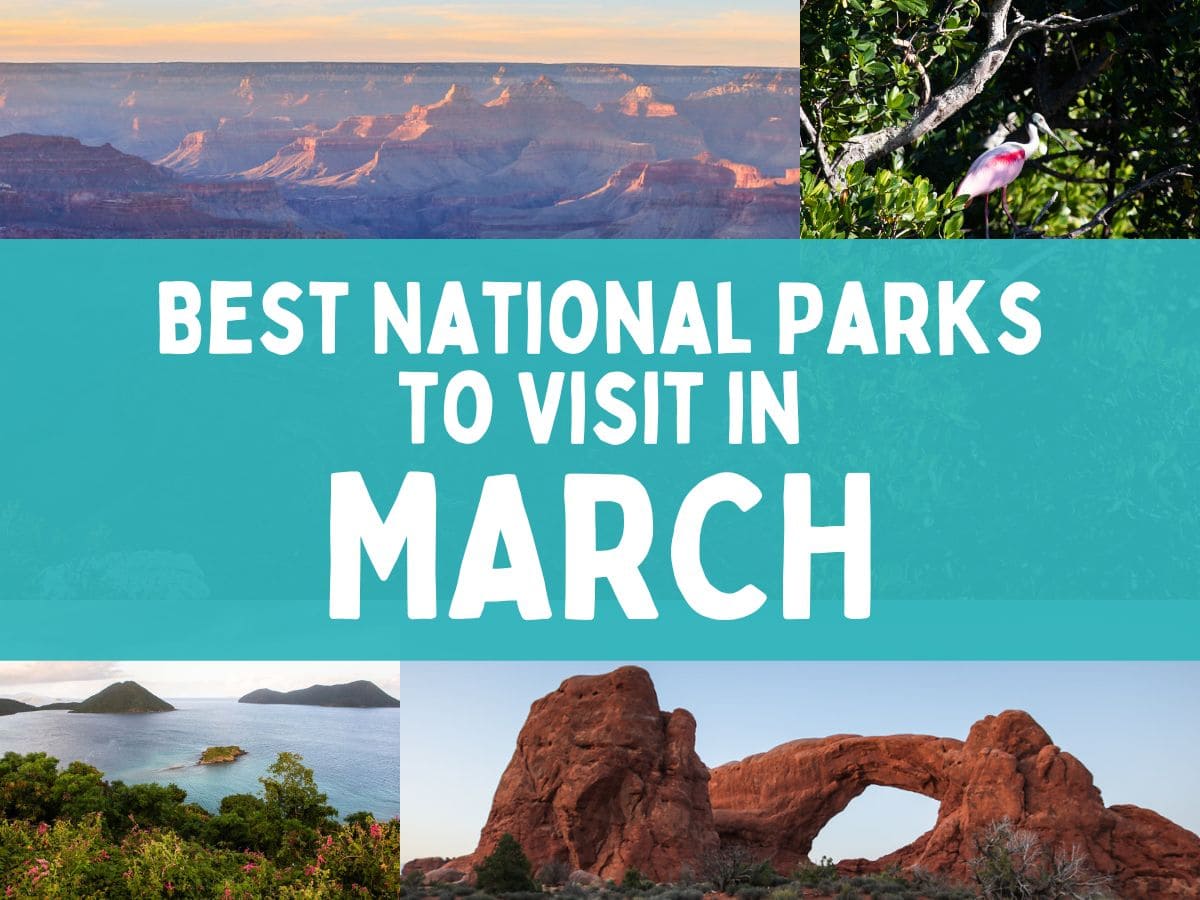
This blog post about the best national parks to visit in March contains affiliate links. If you click on one of those links and make a purchase from one of our partners, we may earn a commission, without any extra cost to you. This helps support this website and ensures fair compensation for our team.
Contents
- 18 Best National Parks to Visit in March
- 1. Arches National Park, Utah
- 2. Big Bend National Park, Texas
- 3. Biscayne National Park, Florida
- 4. Bryce Canyon National Park, Utah
- 5. Congaree National Park, South Carolina
- 6. Death Valley National Park, California
- 7. Dry Tortugas National Park, Florida
- 8. Everglades National Park, Florida
- 9. Gateway Arch National Park, Missouri
- 10. Grand Canyon National Park, Arizona
- 11. Haleakalā National Park, Hawaii
- 12. Hawai‘i Volcanoes National Park, Hawaii
- 13. Joshua Tree National Park, California
- 14. Pinnacles National Park, California
- 15. Saguaro National Park, Arizona
- 16. Virgin Islands National Park, U.S. Virgin Islands
- 17. White Sands National Park, New Mexico
- 18. Zion National Park, Utah
- More Amazing National Parks to Visit in March
- When to Visit National Parks
18 Best National Parks to Visit in March
So, which national parks are best to visit in March? Whether you’re planning a hiking holiday, want to enjoy a park in peace and quiet, or are dreaming of tropical destinations, there are numerous national parks to choose from in March:
- Arches
- Big Bend
- Biscayne
- Bryce Canyon
- Congaree
- Death Valley
- Dry Tortugas
- Everglades
- Gateway Arch
- Grand Canyon
- Haleakalā
- Hawai‘i Volcanoes
- Joshua Tree
- Pinnacles
- Saguaro
- Virgin Islands
- White Sands
- Zion
For each of these amazing national parks to visit in March, I’ve also included some basic information, such as expected crowds (based on historical visitation data), typical weather, and—not unimportant—the average sunrise and sunset times in the park.
NOTE: While the national parks below are all beautiful in March, it’s important to keep in mind that there’s always a possibility of travel disruptions. Late-winter and early-spring weather might cause flight delays or cancellations, even if there’s no severe weather at your departure or arrival airports. Additionally, it’s also possible that some areas in certain parks, including roads and trails, may be temporarily closed. I always recommend checking each specific park’s website for more information about current conditions, weather predictions, and road closures.
1. Arches National Park, Utah
Location: Southeastern Utah
Expected Crowds: Moderate to high
Weather: The average high temperature in Arches in March is 64°F (18°C) and the average low is 35°F (2°C). Although precipitation is rare, it does occasionally occur. Average precipitation throughout March is 0.68 inches (17.3 mm), which is quite low. The weather can be unpredictable in March with beautifully sunny and warm days followed by a spell of freezing temperatures. Prepare for both.
Average Sunrise Time: 7:04 am
Average Sunset Time: 6:57 pm
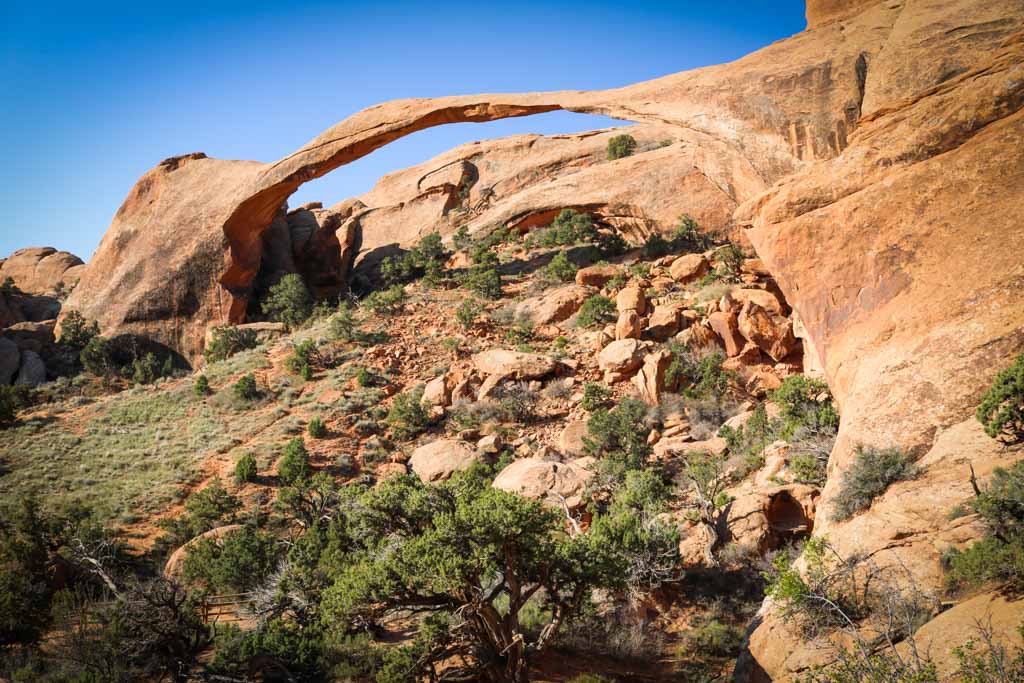
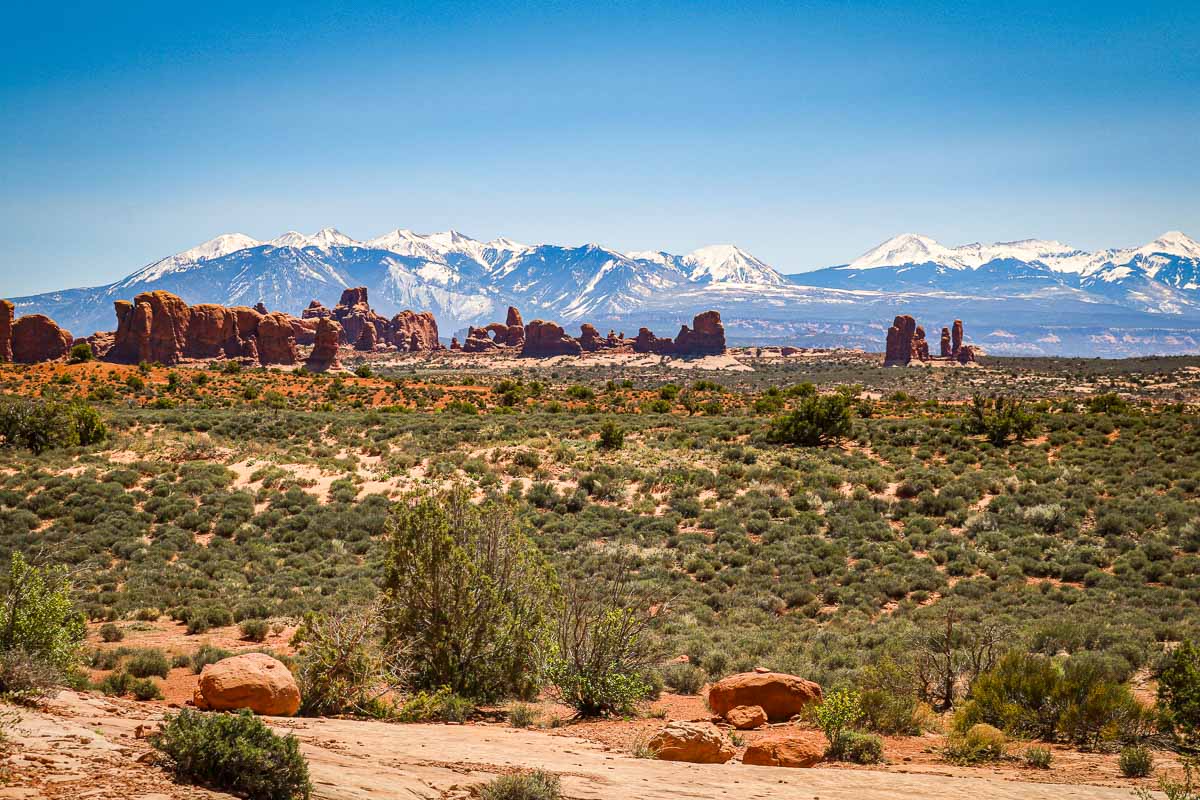
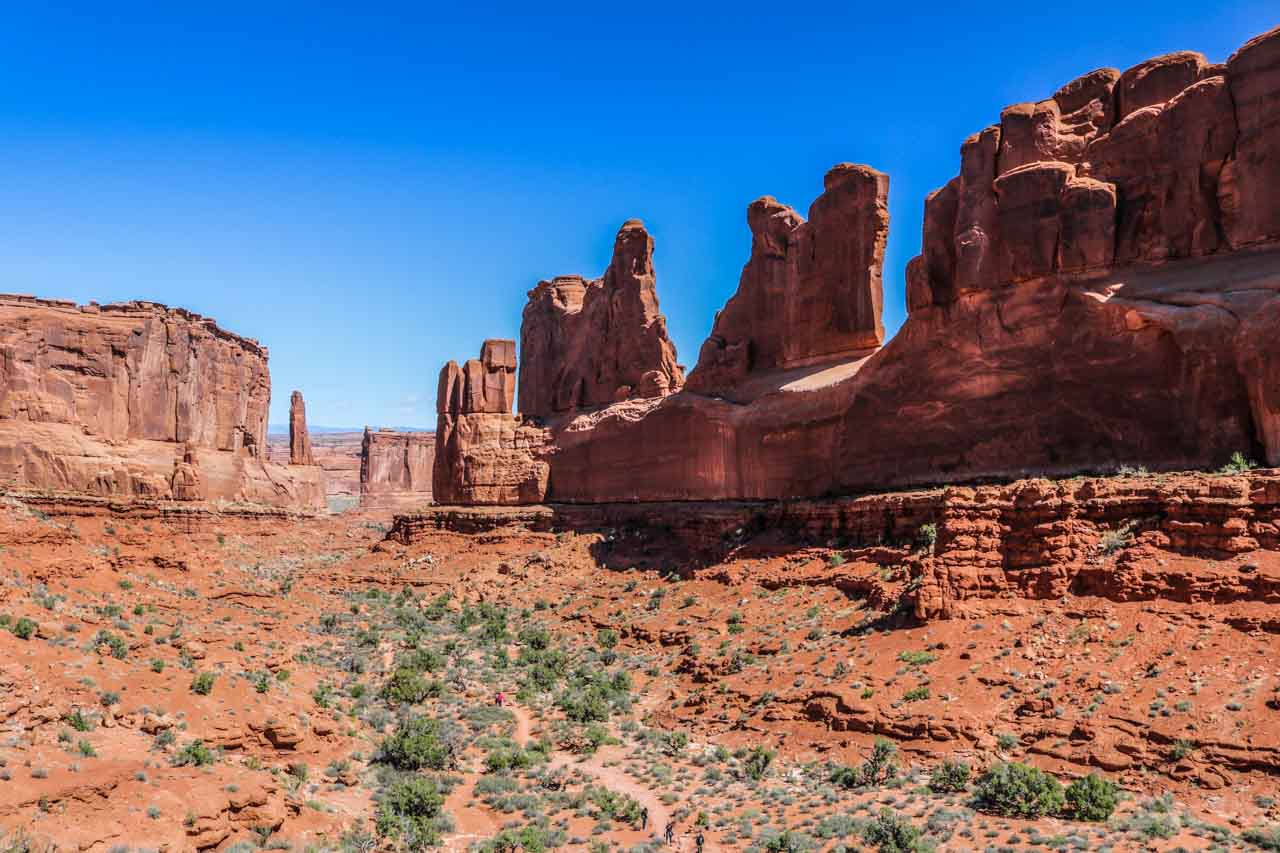
Visiting Arches National Park in March
One of America’s most cherished national parks, Arches National Park experiences an explosion in visitation in March.
In a typical year, visitation numbers in March are threefold what they were in February. However, they are still well below the absolute peak crowds that visit the park during its high season, from May through September.
A big reason why March is such a popular month to visit Arches National Park, which does not necessarily promise fantastic weather this time of year, is Spring Break.
The gateway town of Moab is ultra-popular among spring breakers, who come to enjoy some early-spring sunshine on the Colorado Plateau and take advantage of the many amazing outdoor activities available there.
It’s important to remember that March is a month of transition at Arches, so prepare for both sunny and potentially freezing-cold weather. Anyone who’s done their homework, made reservations, and has appropriate clothing can have an absolute blast in Arches in early-spring.
All of the park’s greatest hiking trails should be open—although it doesn’t hurt to check with a park ranger—and the scenery and views are never not amazing.
More About Arches National Park
- Park Website
- Travel Guide
- Topographic Map
- Best Arches Hikes
- Most Beautiful Arches in Arches National Park
- Top Things To Do in Arches National Park
- Best Views on the Arches Scenic Drive
- Accommodation
2. Big Bend National Park, Texas
Location: Southwestern Texas
Expected Crowds: High
Weather: The average high temperature is 75.2°F (24°C), while the average low temperature is 47.9°F (9°C). The monthly precipitation average is merely 0.31 inches (9.7 mm) in total. Snow is increasingly rare but still possible in March, particularly in the mountains.
Average Sunrise Time: 7:37 am
Average Sunset Time: 7:34 pm
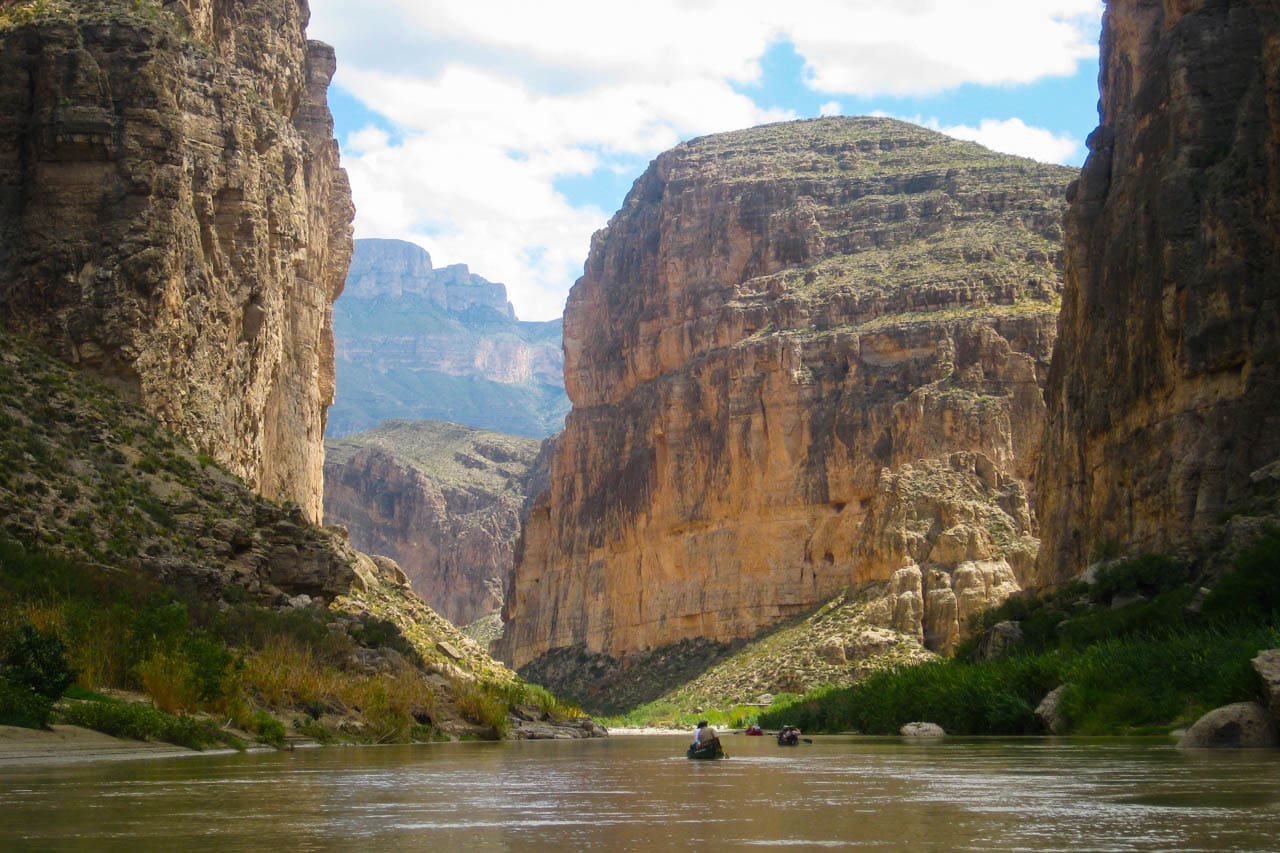
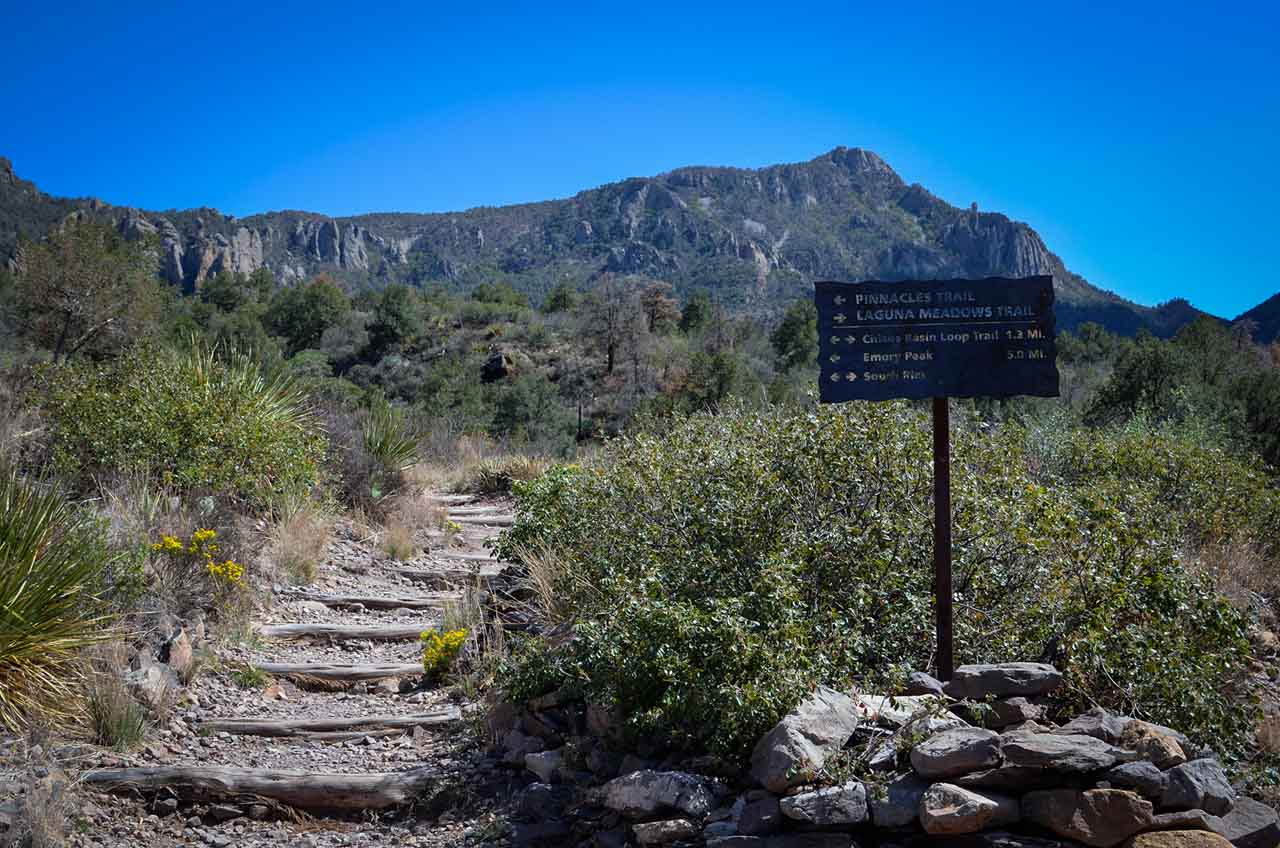
Visiting Big Bend National Park in March
March marks the start of spring in Big Bend National Park and is “typically warm and pleasant and the park’s busiest season,” according to the National Park Service.
In fact, Big Bend National Park gets so busy in March that the agency advises potential visitors to “avoid mid-March (Spring Break) unless you have reservations for accommodations.”
Those who do have accommodations reserved are in for a real treat, though. March in Big Bend is absolutely gorgeous.
Historically, it’s the driest month of the entire year, while daytime temperatures are well into the 70s. Nights are cooler, but usually not exceptionally cold, making for excellent camping conditions.
Besides camping, hiking, and boating, there are many other ways to explore and enjoy these spectacular canyons, rugged desert plains, and mountains on the border of the U.S. and Mexico. Those include bird watching, fishing, stargazing, horseback riding, and scenic drives.
All in all, Big Bend National Park in March is nothing short of beautiful—you could argue it’s the best time of year to visit this park.
More About Big Bend National Park
3. Biscayne National Park, Florida
Location: Southern Florida
Expected Crowds: Moderate
Weather: The average high temperature is about 79°F (26°C), while the average low temperature is 65°F (18°C). March is one of the driest and sunniest months in Biscayne National Park, as this is still the dry season in southern Florida
Average Sunrise Time: 7:04 am
Average Sunset Time: 7:03 pm
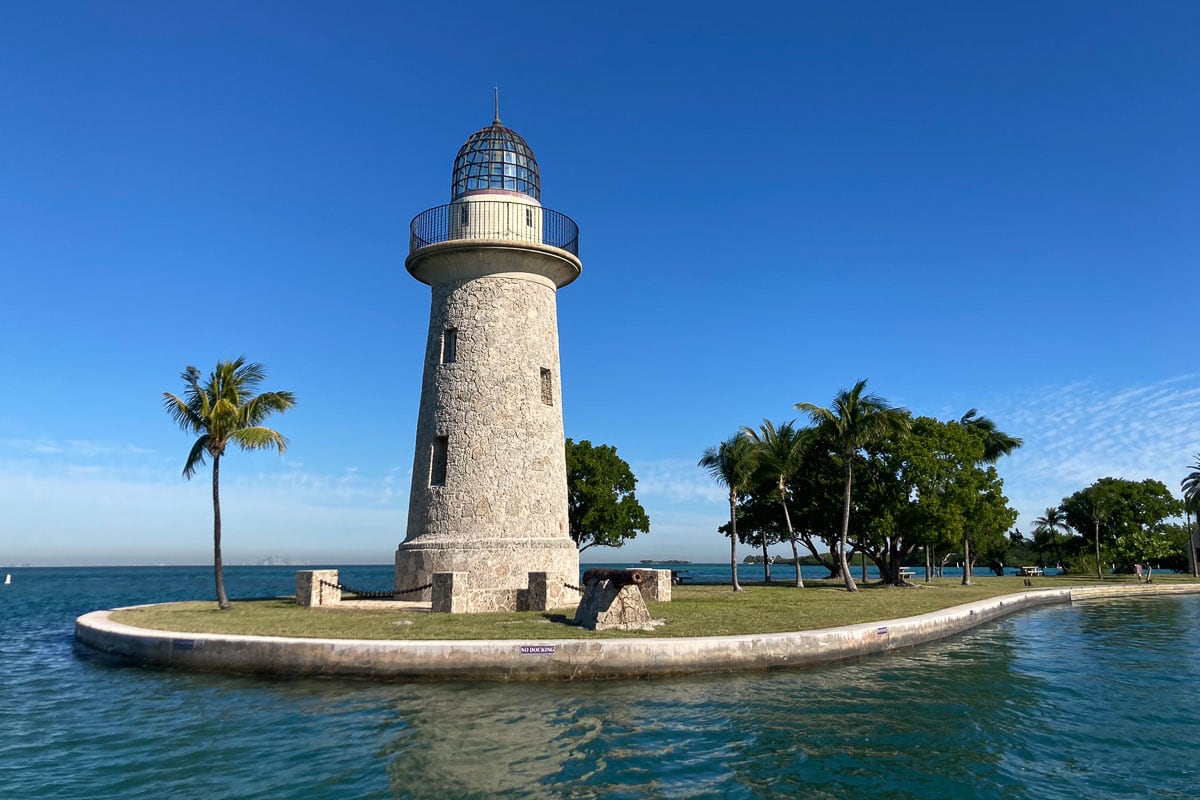
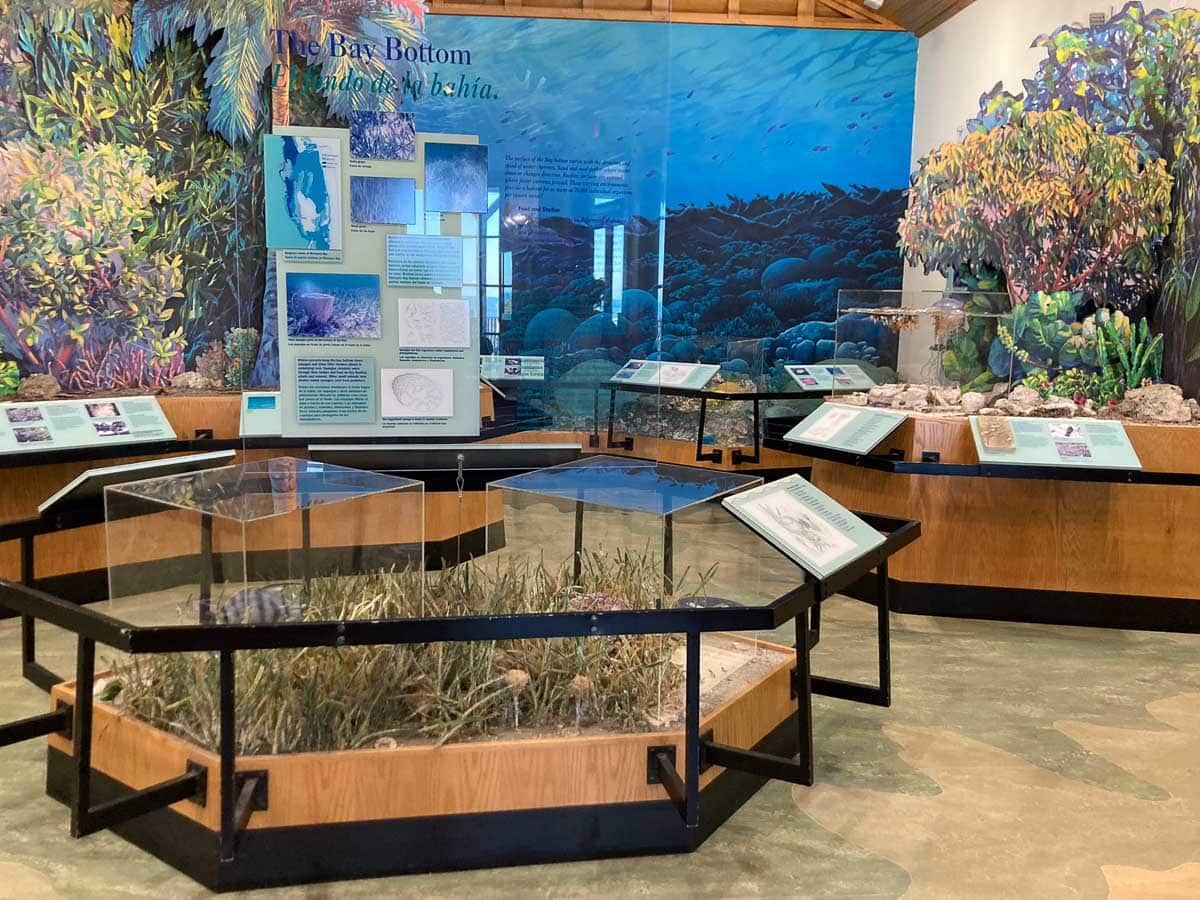
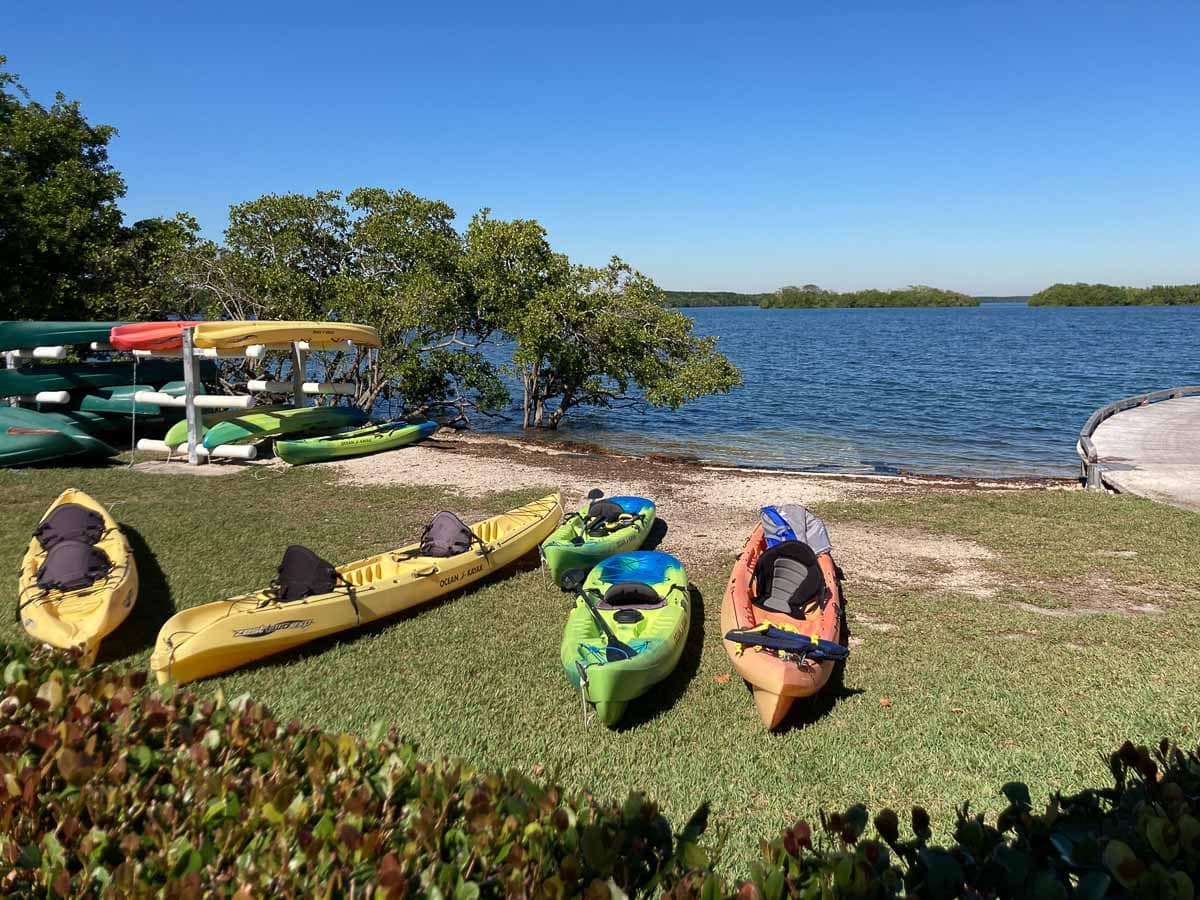
Visiting Biscayne National Park in March
No less than 95% of Biscayne National Park, which is just south of Miami, is water. Only 5% is land, which includes a small stretch of mainland shoreline and several offshore islands. Therefore, the only way to explore and experience Biscayne National Park is on boat trips.
A wide array of excursions leave from the Biscayne National Park Institute near the park’s visitor center, from glass-bottom boat tours to snorkeling and scuba diving trips and sailboat outings.
On these boat tours, you can enjoy the stunning seascapes of Biscayne Bay, both from the boat itself and in the water. This park offers some of the best snorkeling and diving in the world, though the best underwater visibility does occur in summer.
Early-spring is a great time to visit Biscayne National Park thanks to southern Florida’s amazing subtropical climate.
March is still well in the dry season in this part of the country, which typically runs from November through April. This means that a visit to Biscayne National Park in March comes with warm weather and tons of sunshine.
For instance, March is one of the least rainy, least humid, and least overcast months of the year at Biscayne. A beautiful time to visit this aquatic, key-dotted wonderland, in other words.
More About Biscayne National Park
- Park Website
- Travel Guide
- Top Things to Do in Biscayne National Park
- How to Visit Boca Chita Key
- Accommodation
4. Bryce Canyon National Park, Utah
Location: Southwestern Utah
Expected Crowds: Low to moderate
Weather: March is a month of transition in Bryce Canyon, with weather conditions that can be highly variable. The average high temperature is 45°F (7°C) and the average low temperature in March is 23°F (-5°C). Nights are often below freezing, while the occasional snowstorm may cause temporary closures. Precipitation comes primarily in the form of snow, with a typical monthly total snowfall of 17 inches (431 mm).
Average Sunrise Time: 7:14 am
Average Sunset Time: 7:08 pm
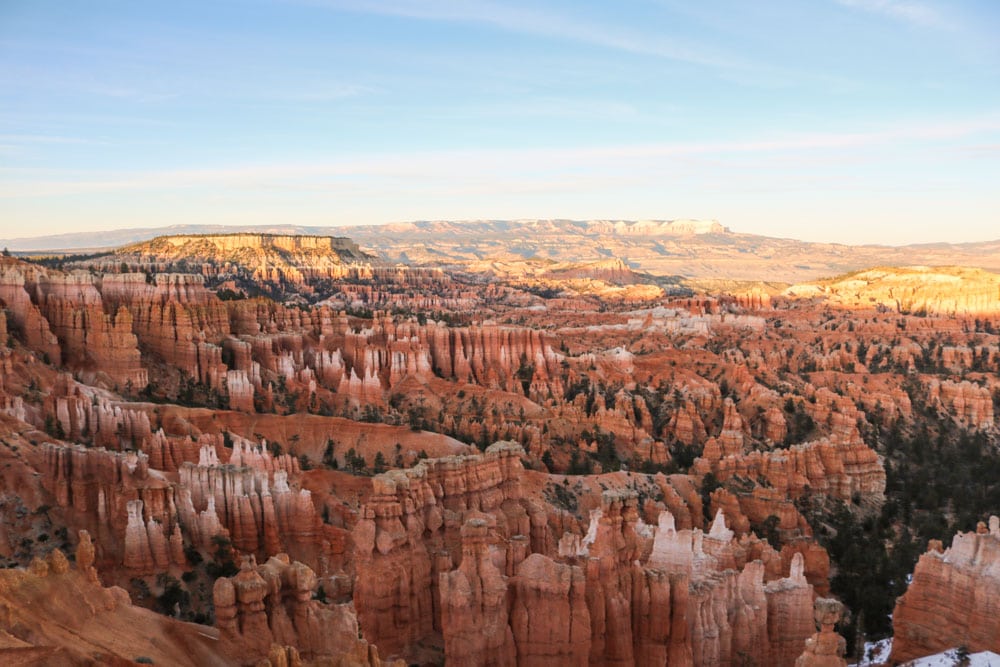
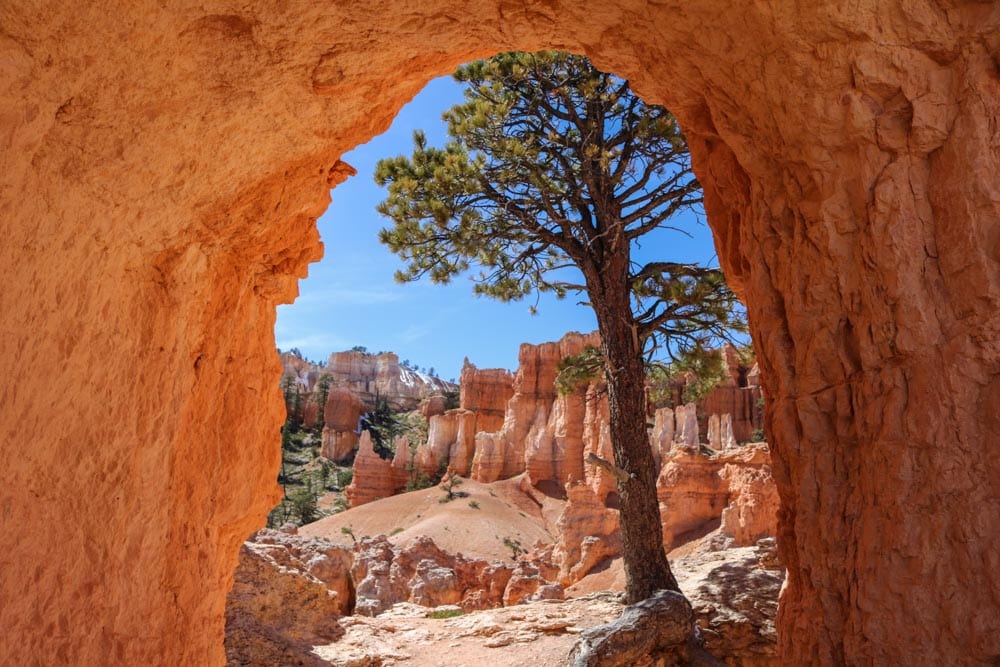
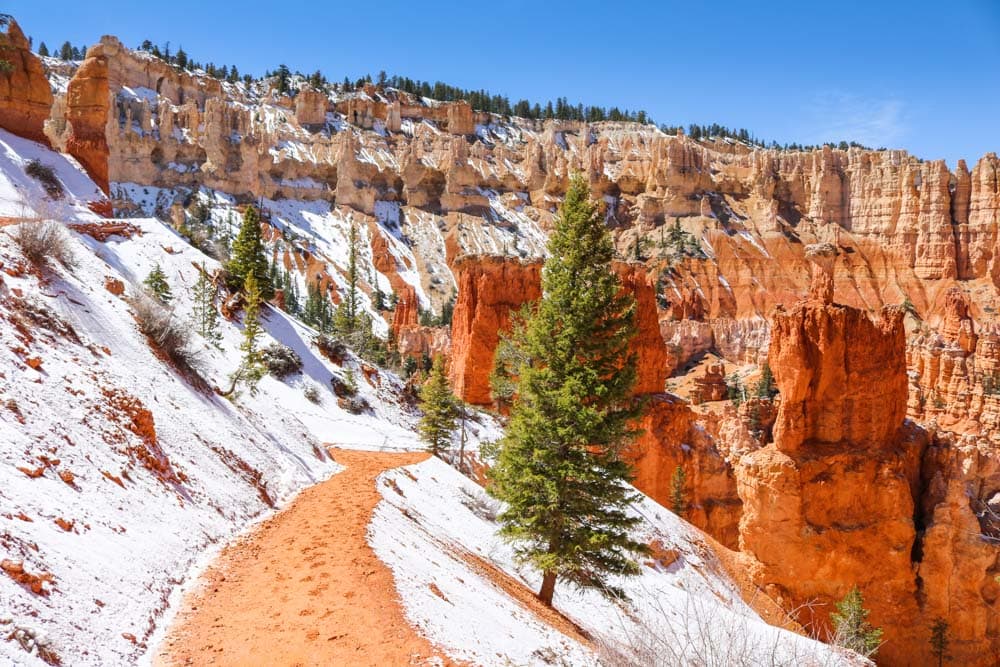
Visiting Bryce Canyon National Park in March
While Bryce Canyon National Park, located at an elevation of over 9,000 feet, is by no means at its most accessible or warmest in March, this could still be a really fun time to visit this spectacular national park in Utah.
Especially toward the end of the month, Bryce Canyon can be downright magnificent. A sunny day after some nightly snowfall will offer breathtaking scenery, as the white snow sharply contrasts with the characteristically vibrant orange colors of the landscape.
Hiking may be possible at Bryce Amphitheater, but you most likely will need some form of crampons or other reliable traction devices. The views from the overlooks are unforgettable, though, and don’t require any hiking.
Visitors should come prepared with warm clothing, study shoes or boots, and flexible plans. Those who don’t mind chilly weather and possibly snowy/icy conditions will be able to have a more than memorable time visiting Bryce Canyon National Park in March.
More About Bryce Canyon National Park
5. Congaree National Park, South Carolina
Location: Central South Carolina
Expected Crowds: Relatively high
Weather: The average high temperature in Congaree National Park throughout March is about 67°F (19°C), while the average low temperature ranges around 45°F (7°C). Toward the end of the month, however, they are several degrees higher than the average. Rainfall is common—a 25-30% chance of rain each day on average. Total rainfall averages about 3 inches (76 mm). Thunderstorms are possible as well.
Average Sunrise Time: 6:58 am
Average Sunset Time: 6:55 pm
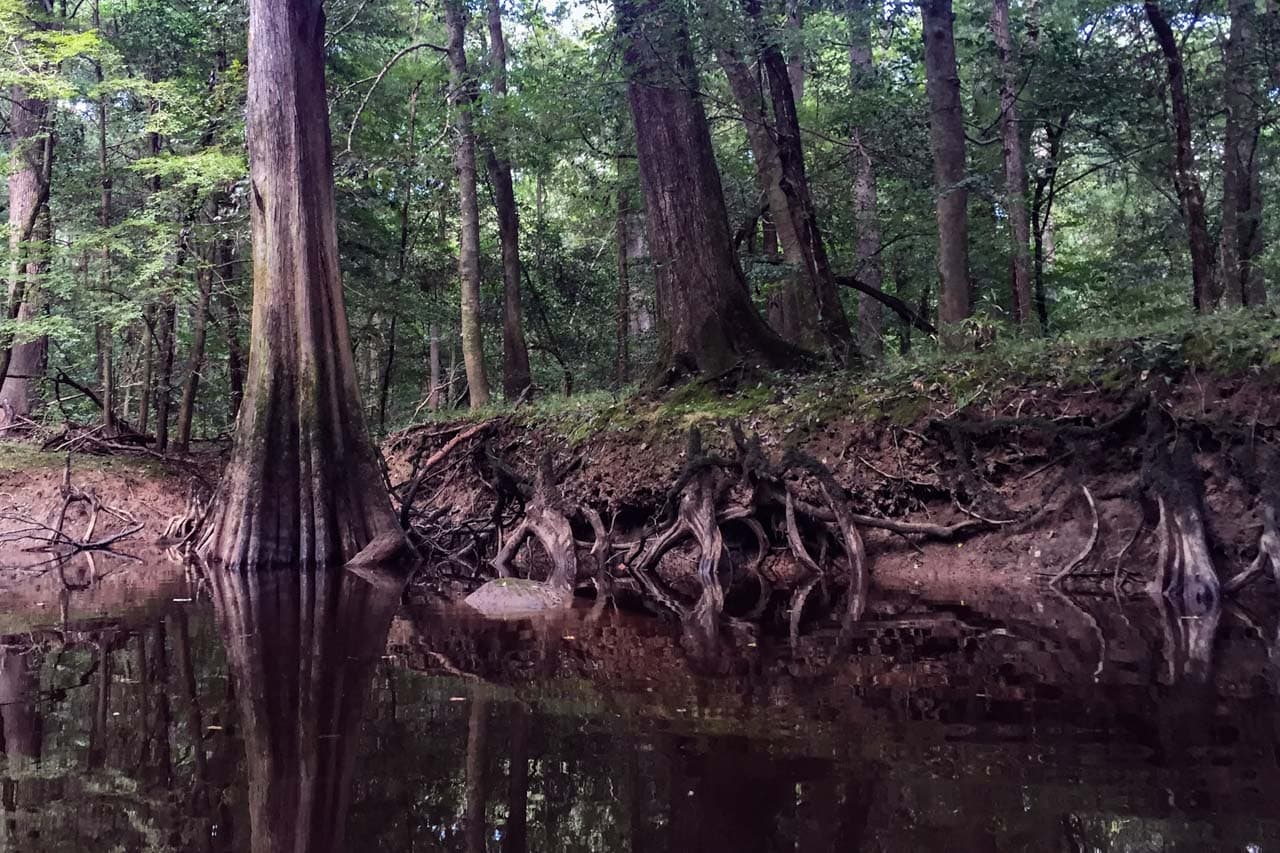
Visiting Congaree National Park in March
“From March through May can be one of the best times to visit the park,” the National Park Service says.
This is thanks to generally quite comfortable weather, with daily temperatures reaching well into the 70s by the end of the month. Humidity levels are near their lowest of the entire year, which is a huge factor in the enjoyability of visiting Congaree National Park in March.
The park is, after all, located in central South Carolina, which has a humid subtropical climate. Summers can be very warm and extremely humid. Spring, on the other hand, offers some of the best weather of the year. This is also a time of year when insects won’t be bothering you while exploring the park.
It is important to note, though, that rainfall is always a possibility in Congaree National Park—this is the case year-round. Thunderstorms are possible in March, but shouldn’t be a major issue if you plan your trip properly. (You only need 1-2 days to explore Congaree, so with some flexibility you should be able to work your way around any possible thunderstorms.)
This all being said, it’s not an exaggeration to say that March is easily one of the best months to visit Congaree National Park. Temperatures are comfortable, and neither bugs nor humidity are a nuisance this time of year.
As far as activities are concerned, March is an excellent month, too. All popular activities in the park can be enjoyed throughout the month, including hiking, fishing, camping, wildlife viewing, and kayaking/canoeing.
More About Congaree National Park
6. Death Valley National Park, California
Location: Southern California
Expected Crowds: High
Weather: The average high temperature in Death Valley in February is a 82°F (27°C), while the average low temperature is a quite comfortable 55°F (13°C). The monthly precipitation average is merely 0.22 inches (6 mm) in total. Rainfall is rare and sunshine common.
Average Sunrise Time: 6:33 am
Average Sunset Time: 6:27 pm
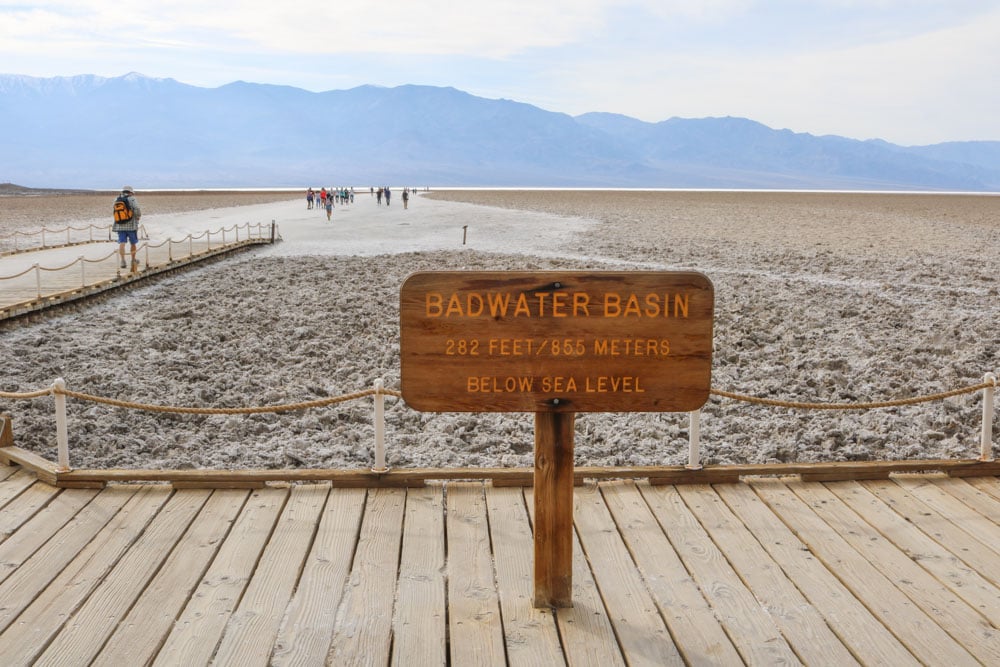
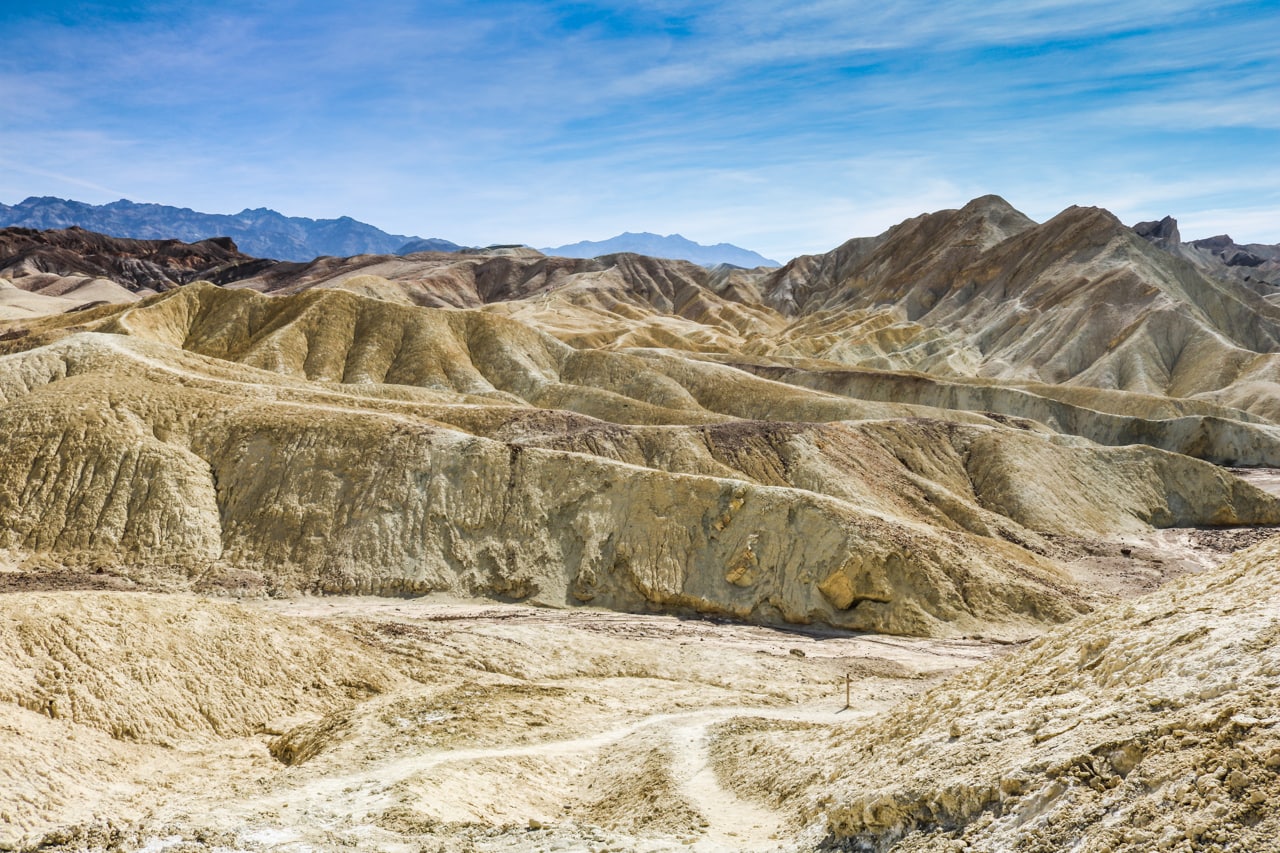
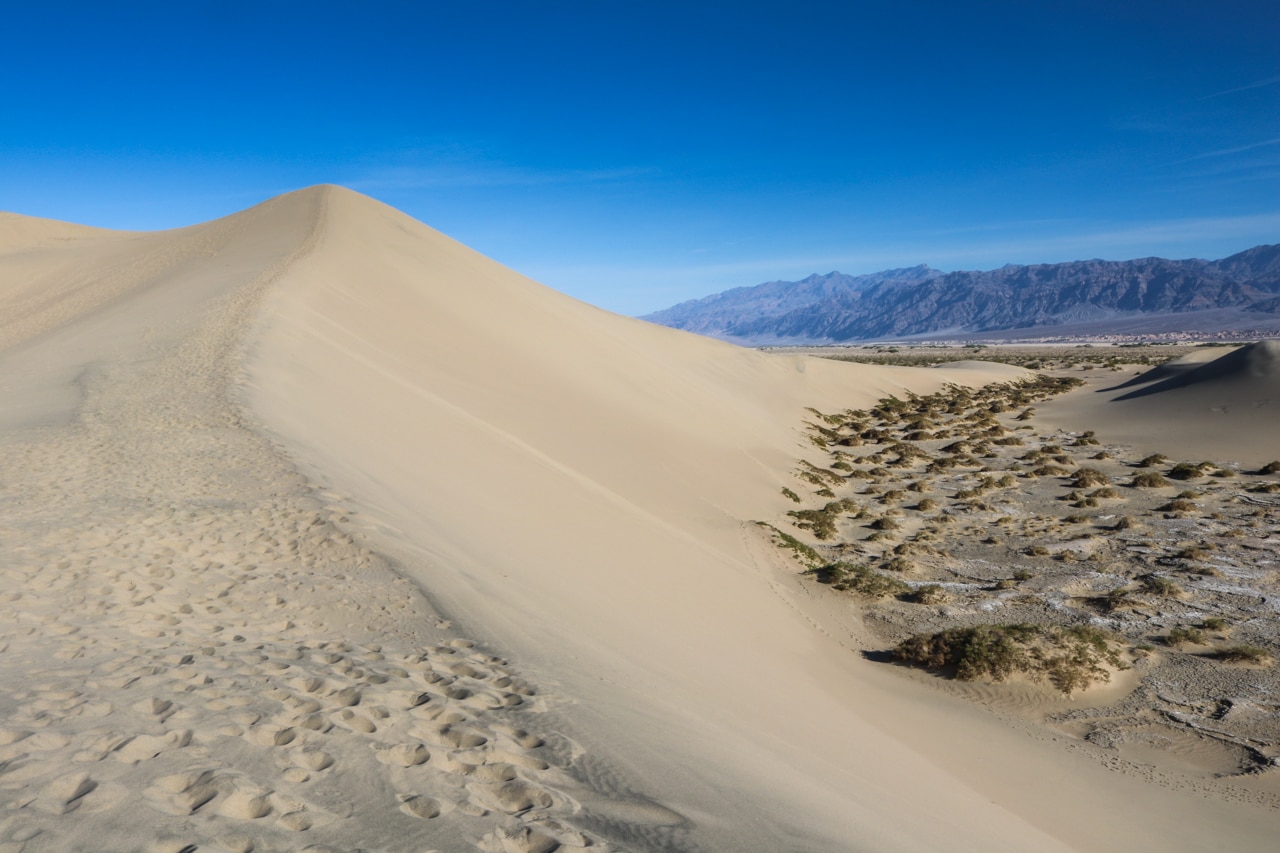
Visiting Death Valley National Park in March
Famous for being both the hottest and driest place in North America, Death Valley National Park is a daunting destination to visit in summer. March, on the other hand, is absolutely glorious.
This time of year, the park’s low elevations have delightful daytime temperatures and overall weather and even the nights aren’t really too cold.
The National Park Service says that spring “is the most popular time to visit Death Valley. Besides warm and sunny days, the possibility of seeing spring wildflowers is a big attraction.”
Especially if the previous winter was rainy, the park’s floral displays can be nothing short of spectacular. Wildflowers in Death Valley usually peak from late-March to early-April.
Additionally, Death Valley National Park also hosts the Death Valley Day Sky Festival in the beginning of March, which offers stargazing programs in one of America’s darkest places.
The spring wildflowers and impressive night sky attract many thousands of visitors to the park throughout March. Considering that March is also Spring Break, this is one of the busiest months of the year.
Therefore, make sure to get reservations months in advance, or arrive at the park early in the morning to grab a first-come first-served campsite.
Besides wildflower viewing and stargazing, other popular activities in Death Valley National Park in March include visiting historic sites, scenic drives, exploring stunning sand dunes, and hiking. In fact, this is arguably the best time of year to hit the many hiking trails in Death Valley National Park!
More About Death Valley National Park
- Park Website
- Travel Guide
- Topographic Map
- Best Death Valley Hikes
- Top Things To Do in Death Valley National Park
- Best Views in Death Valley
- Accommodation
7. Dry Tortugas National Park, Florida
Location: 70 miles west of Key West, southern Florida
Expected Crowds: Moderate to high
Weather: The average high temperature is 79°F (26°C), while the average low temperature is 69°F (20°C). Average precipitation through March is 1.62 inches (41 mm), making it the driest month of the year in the park. Although warm and very dry, winter is also the windiest time of year in this region.
Average Sunrise Time: 7:14 am
Average Sunset Time: 7:14 pm

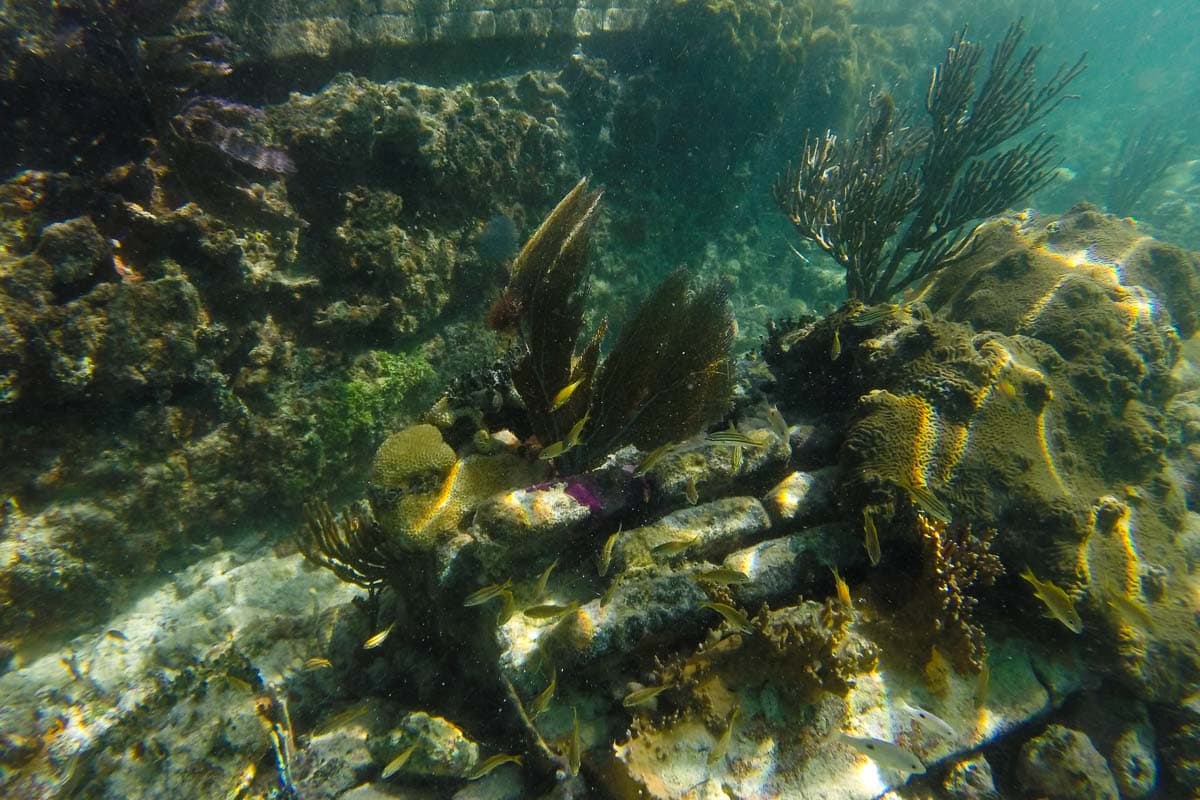
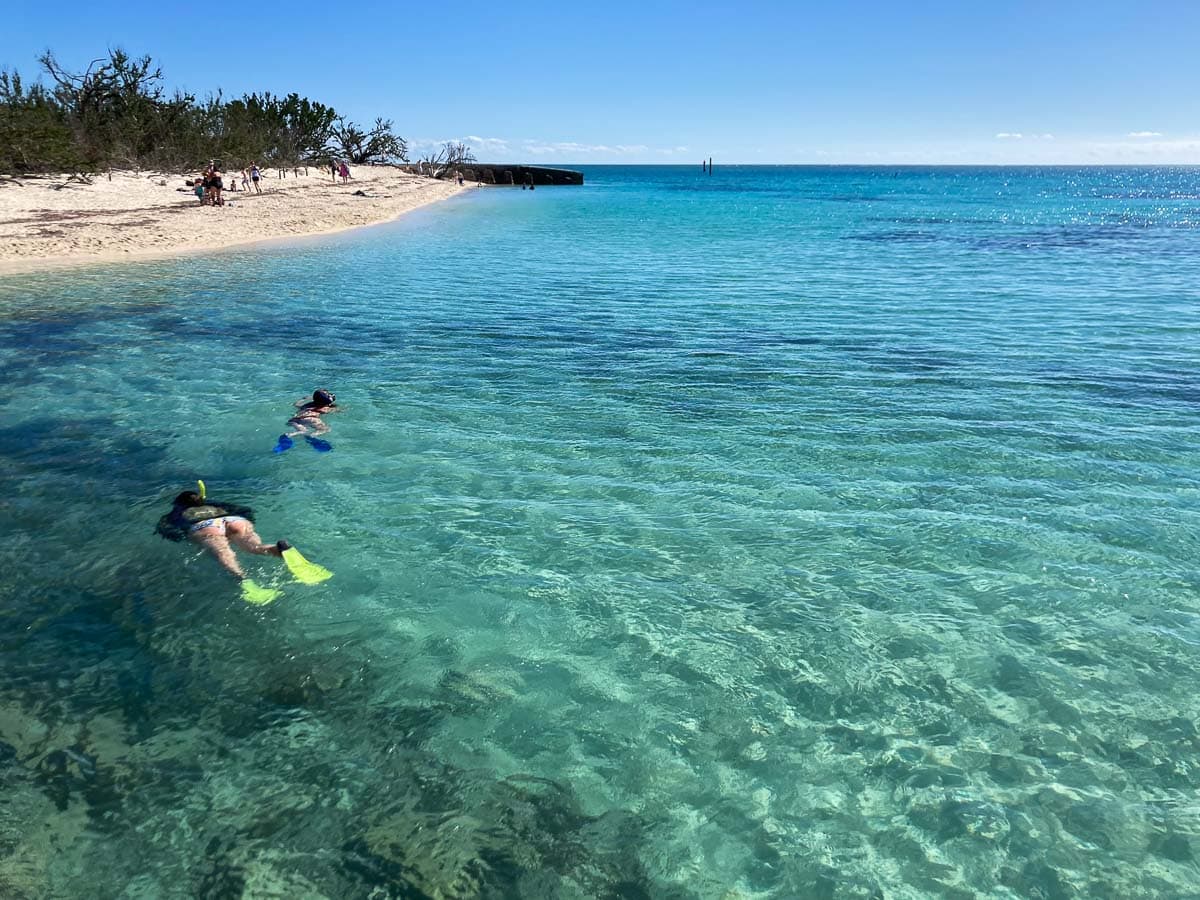
Visiting Dry Tortugas National Park in March
One of the least accessible national parks in the United States, Dry Tortugas National Park is 70 miles west of Key West. It’s only reachable by seaplane or boat.
This is a glorious destination all year, but it’s particularly amazing in the winter dry season, which lasts from November to mid-May in this region. March is well within that season and comes with delightful weather.
The month of March in Dry Tortugas National Park is warm, typically sunny, and—well—dry. The park was named after its dry conditions, specifically its lack of freshwater sources, and the many turtles that frequent its shallow turquoise waters.
From November through April, there can be some occasional windstorms, though, which may cause swells and waves, and reduce visibility underwater. That said, however, March is not the hurricane season in south Florida—the hurricane season officially ends on November 30—so you don’t have to worry about that at all.
In general, visiting Dry Tortugas National Park in March is nothing short of amazing. It’s literally the best time of year to visit this part of the country.
Throughout the month, you can expect beautiful sunny weather and very comfortable temperatures that can reach the lower 80s in the afternoon. Although one of the “cooler” months of the year, March is also one of the months that sees the least precipitation.
Highlights of Dry Tortugas National Park include massive Fort Jefferson, which is the largest brick building in the Americas, stunning beaches, and world-class snorkeling and scuba diving.
Tours, whether by plane or boat, depart from Key West. The Yankee Freedom catamaran is the most popular way to get to the Dry Tortugas from Key West.
More About Dry Tortugas National Park
8. Everglades National Park, Florida
Location: Southern Florida
Expected Crowds: High
Weather: The average high temperature is 82°F (28°C), while the average low temperature is 58°F (15°C). February is the fourth-driest month in Everglades National Park, after December, January, and February, with a total precipitation of only 1.92 inches (49 mm). The weather is generally sunny, warm, and dry.
Average Sunrise Time: 7:07 am
Average Sunset Time: 7:07 pm
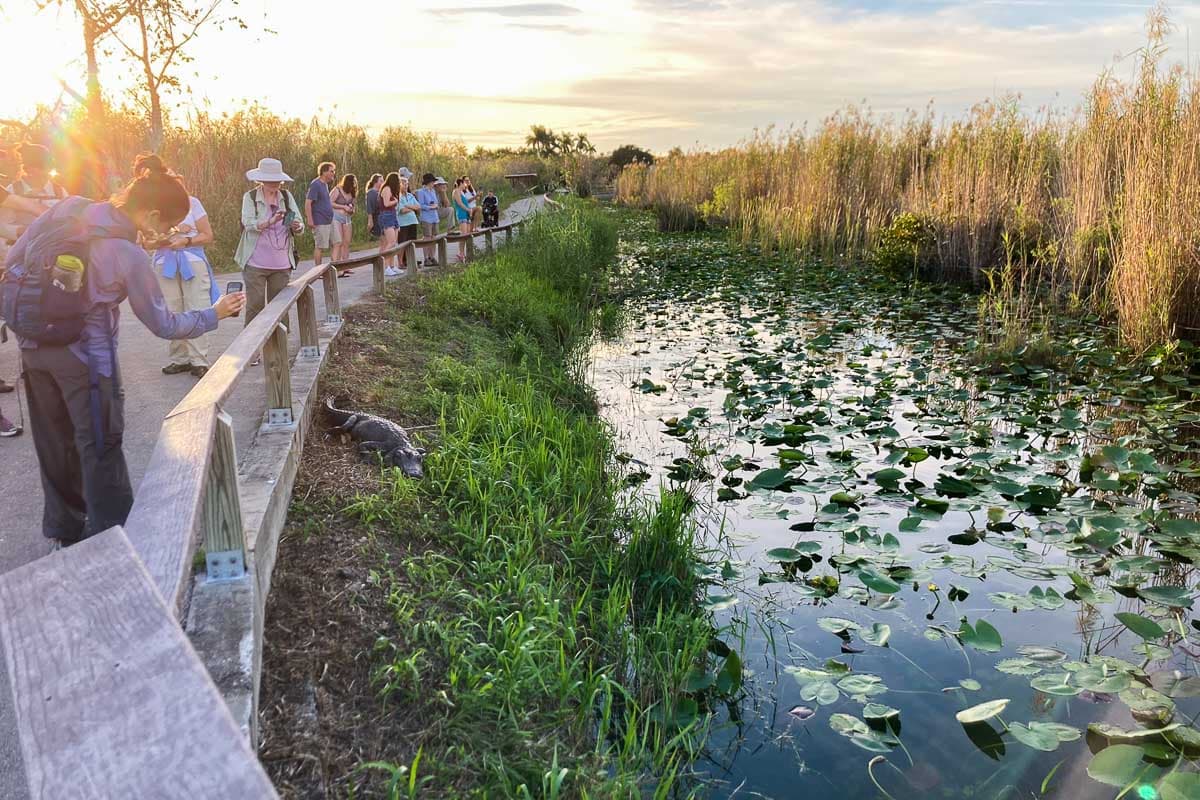
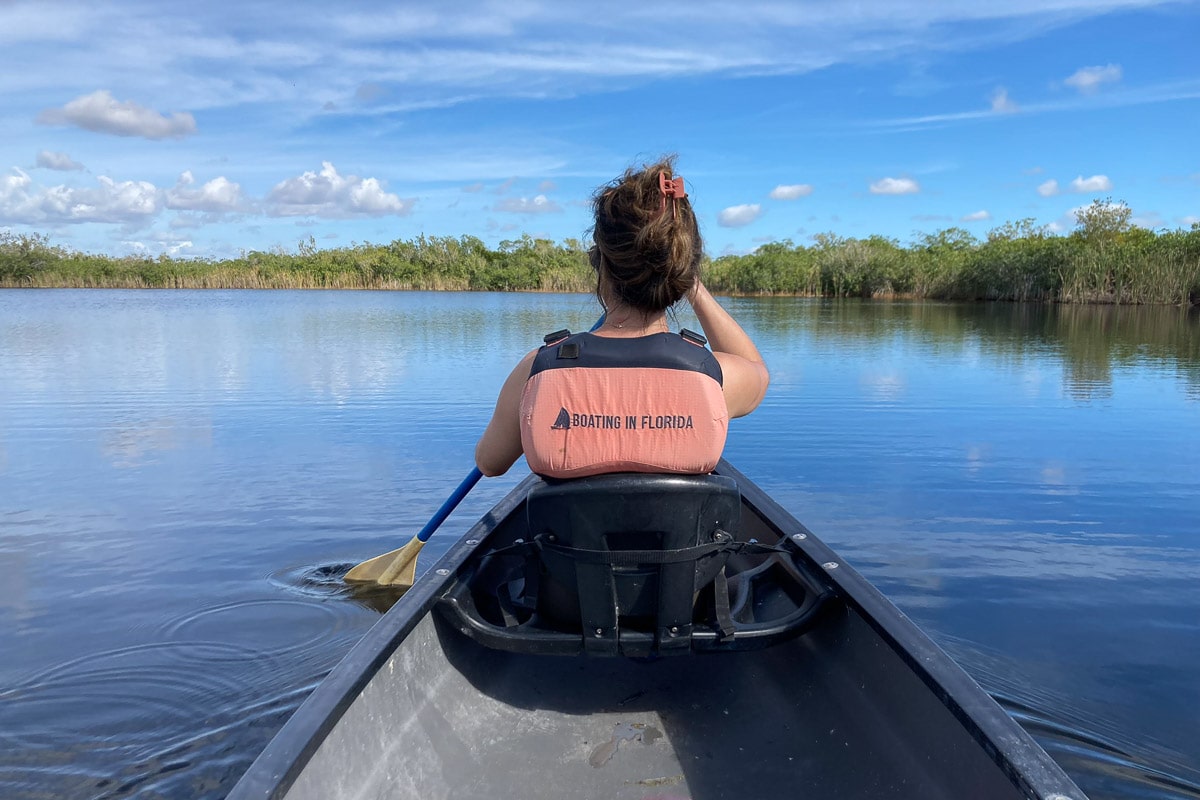
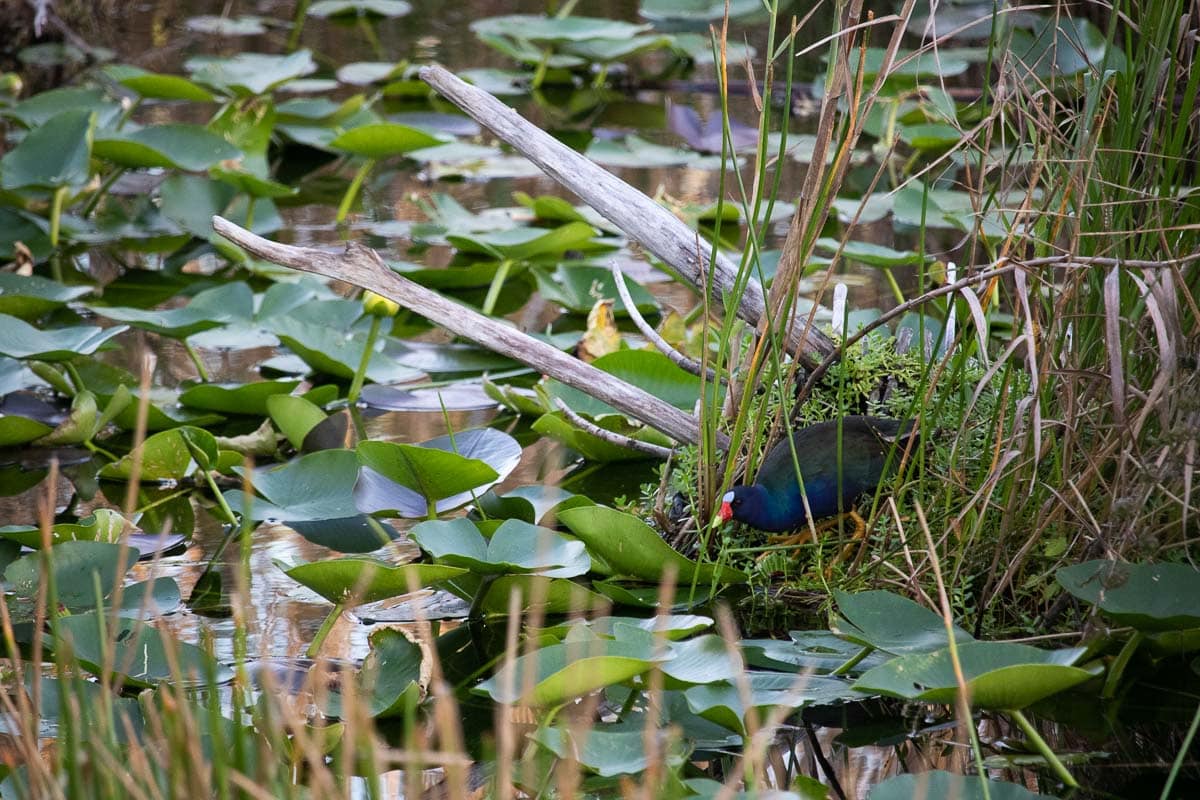
Visiting Everglades National Park in March
This sprawling park southwest of Miami—the third-largest national park in the contiguous United States—can be visited throughout the year, but summer does come with high humidity, hot weather, and relentless bugs.
Winter and early-spring, on the other hand, have none of those. This is the dry season and there are virtually no bugs (except in some swampy areas), humidity is low, and temperatures are more than comfortable.
Although March is one of the busiest months of the year in Everglades National Park—thanks to both the amazing weather and south Florida’s popularity as a Spring Break destination—there are still plenty of opportunities to get away from the crowds.
This is especially true for more remote parts of the park, such as Flamingo and the Ten Thousand Islands, where you can easily get away from other visitors in a canoe or kayak.
The month of March is a delightful time to explore the “River of Grass,” whether you’re going canoeing or kayaking, joining a cruise, or going on a wildlife excursion.
Both a UNESCO World Heritage Site and International Biosphere Reserve, Everglades National Park encompasses one of the world’s most important wetland regions. For one, this is one of only a few places on Earth where both alligators and crocodiles live.
Other marine animals you might spot include manatees, sharks, and dolphins.
Everglades National Park is also renowned around the world for its sheer abundance of birds. More than 300 species of birds call the park home, many of which you can see in winter.
High-profile birds in the Everglades are anhingas, roseate spoonbills, great egrets, white-crowned pigeons, snail kites, osprey, bald eagles, wood storks, limpkins and pelicans. All of those can be seen throughout the park in March.
More About Everglades National Park
- Park Website
- Travel Guide
- Topographic Map
- Where to See Wildlife in Everglades National Park
- Where to See Alligators and Crocodiles in the Everglades
- Famous Birds of the Everglades
- Best Things to Do in Flamingo
- Best Things to Do in Shark Valley
- Top Sights on the Everglades Main Park Road
- Best Everglades Bike Trails
- Accommodation
9. Gateway Arch National Park, Missouri
Location: St. Louis, Missouri
Expected Crowds: Moderate
Weather: The average high temperature is about 57°F (14°C), while the average low temperature is about 38°F (0°C). In general, March is a relatively chilly and breezy month in Gateway Arch National Park, but the weather tends to improve throughout the month. It’s a pretty busy month because of Spring Break, but not nearly as crowded as summer.
Average Sunrise Time: 6:46 am
Average Sunset Time: 6:39 pm

Visiting Gateway Arch National Park in March
The National Park Service says that Gateway Arch National Park experiences “a visitation rush during spring break season, but it is less busy than summer.”
In terms of weather, daytime temperatures tend to be relatively comfortable—and that’s the only time you’ll actually be exploring this urban park.
There’s also the added benefit that Gateway Arch, the smallest of all U.S. national parks, is located in downtown St. Louis. Because the city has plenty of attractions to offer, too, both indoors and outdoors, you’ll always find something to do, even if it rains.
Additionally, the main highlights of Gateway Arch National Park are inside anyway, such as the Old Courthouse, the ride to the top of the arch, and the award-winning park film at Tucker Theater.
Additionally, an absolute highlight of visiting Gateway Arch National Park in March is the opportunity to enjoy the first spring blooms in the park’s beautiful, landscaped gardens. “In late March through April, the magnolia and redbud trees impress and delight visitors,” the park says.
More About Gateway Arch National Park
10. Grand Canyon National Park, Arizona
Location: Northern Arizona
Expected Crowds: Moderate
Weather: Weather conditions can vary dramatically throughout the park and up and down elevations. On the South Rim (the park’s most visited area) the average high temperature is 51°C (10°C) and the average low temperature is 25°F (-4°C). In the Inner Canyon, however, the average high is 71°F (22°C), while the average low is 48°F (9°C). Total precipitation on the South Rim in March averages 1.38 inches (35 mm), the Inner Canyon gets 0.79 inches (20 mm) of precipitation.
Average Sunrise Time: 6:38 am
Average Sunset Time: 6:35 pm
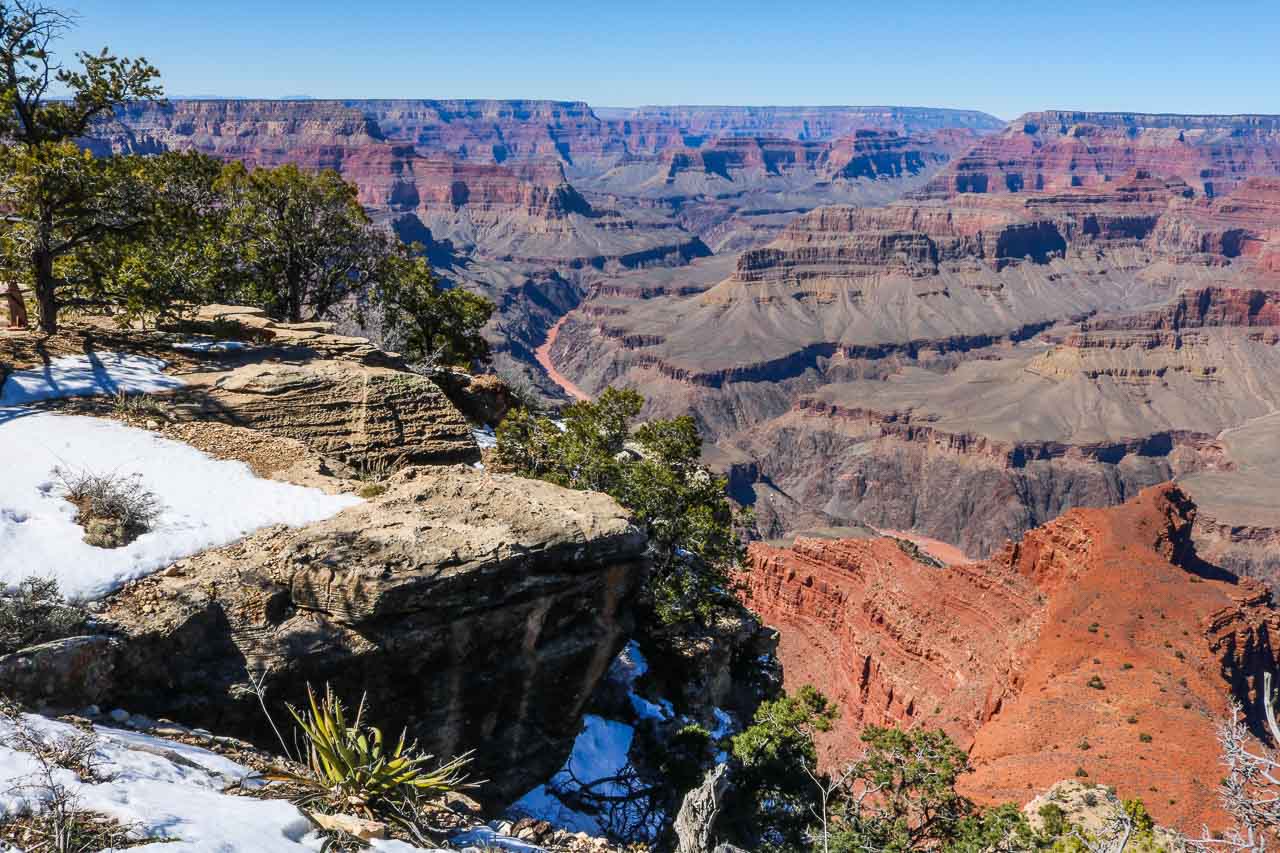
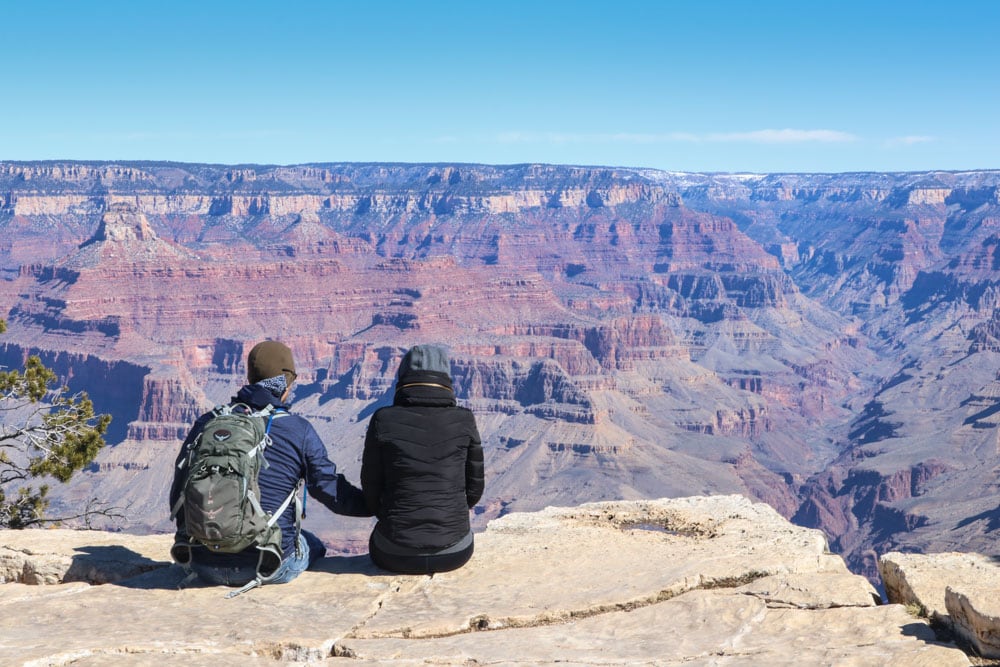
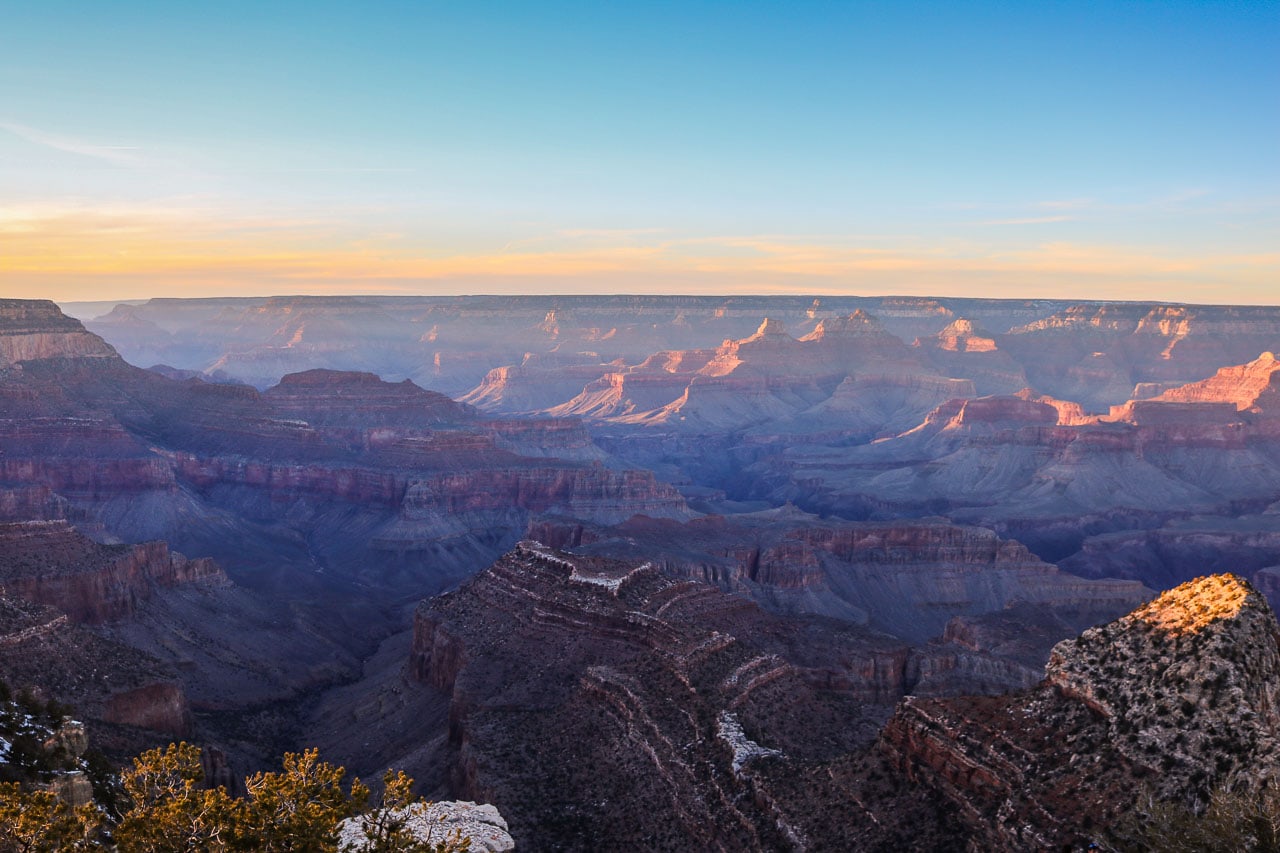
Visiting Grand Canyon National Park in March
Although March is still well within the harsh winter season in Grand Canyon National Park, it’s also the first month of the year that allows for some decent outdoor recreation.
I visited the Grand Canyon in mid-March and, although there was still snow and ice on the South Rim, hiking down into the canyon was possible (with crampons). Once in the canyon, the temperature increased drastically, up to the point I had to take off my jacket and hoodie, and was hiking in just a t-shirt.
This is only to say that, especially if you’re planning on doing some hiking, you should come prepared for both freezing and quite warm temperatures. If you’re just staying on the South Rim, though, you will most likely need warm winter clothing throughout March.
The beauty of visiting Grand Canyon National Park in March lies in its extraordinarily beautiful scenery this time of year.
There will be snow on the rim and upper elevations in the canyon, which provides a stunning contrast to the canyon’s vibrant orange and red colors—particularly on sunny days.
This is also one of the least busy months in the park, with significantly fewer visitors than in the next seven months.
So, if you’d like to enjoy the spectacular Grand Canyon landscapes in relatively peace and quiet, as well as doing some early-spring hiking (make sure you have appropriate gear, though!), March is a fantastic month to visit.
More About Grand Canyon National Park
- Park Website
- Travel Guide
- Topographic Map
- Best Grand Canyon Hikes
- Top Things To Do in Grand Canyon National Park
- Best Scenic Views of the Grand Canyon (South Rim)
- Accommodation
11. Haleakalā National Park, Hawaii
Location: Eastern half of Maui, Hawaii
Expected Crowds: Moderate
Weather: The average high temperature is 75°F (24°), while the average low temperature is 70°F (21°C). (Note that these are averages for the entire park. The high-elevation Summit District is significantly colder than the tropical and coastal Kīpahulu District.) Rainfall is possible every day in Kīpahulu; the Summit District is much drier.
Average Sunrise Time: 6:33 am
Average Sunset Time: 6:34 pm
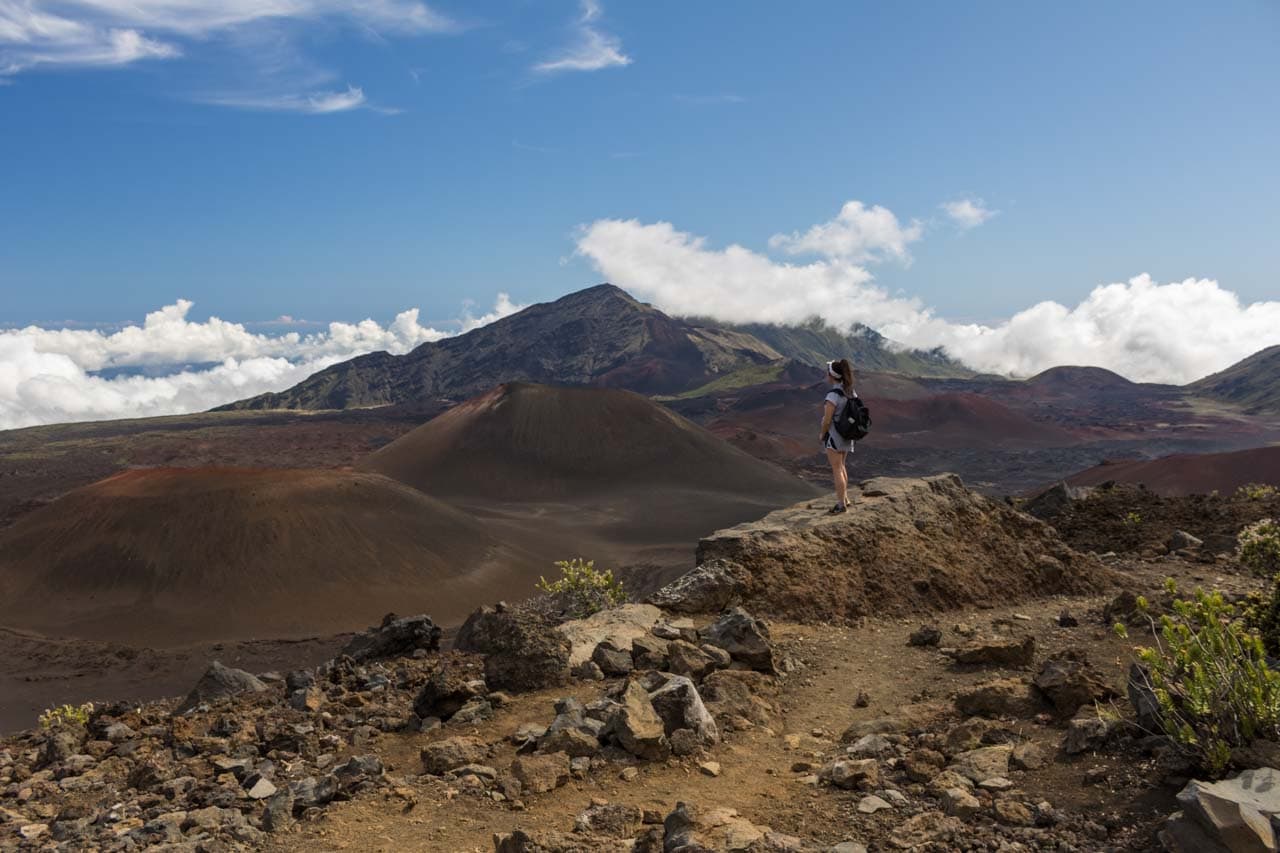
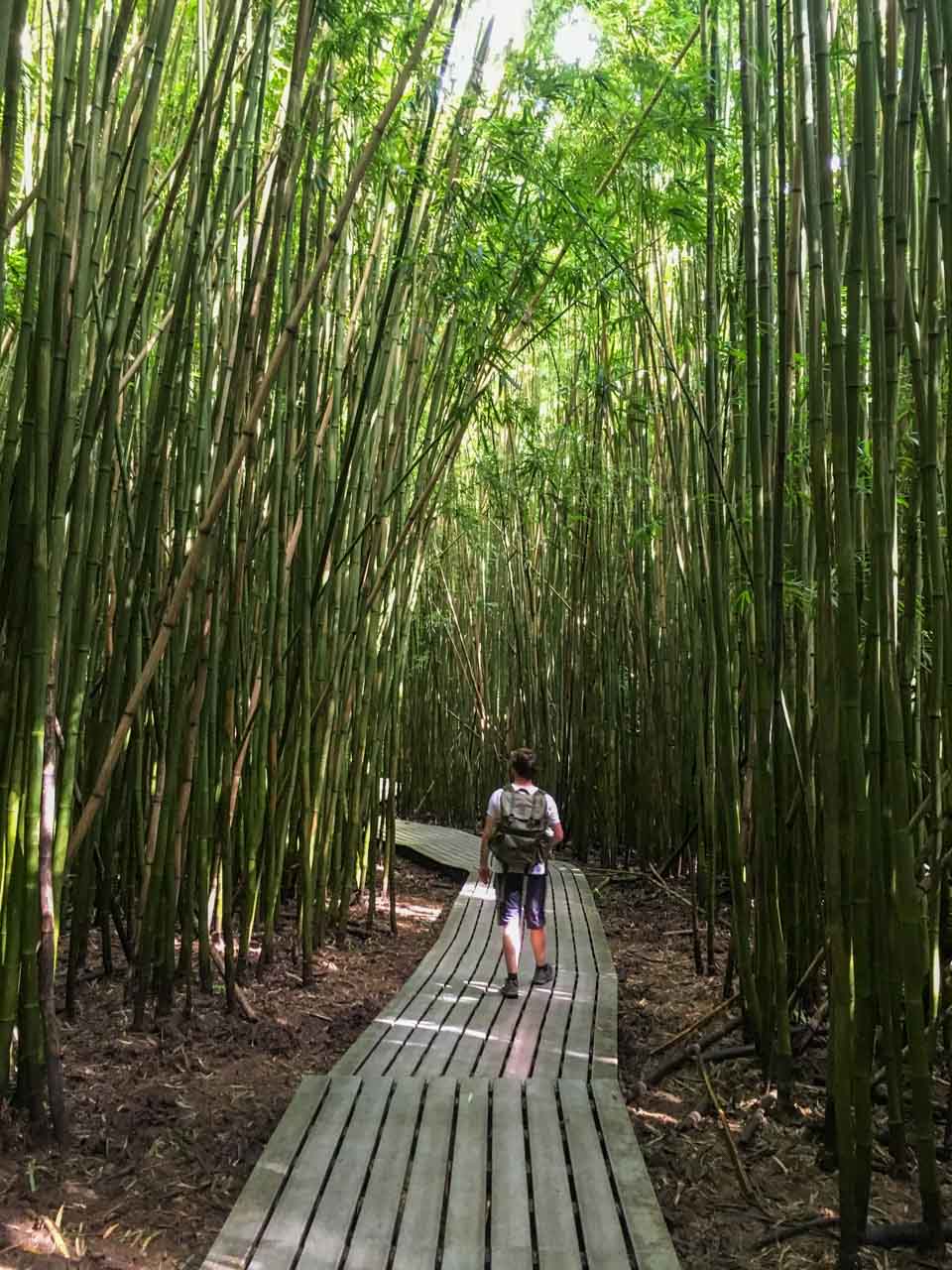
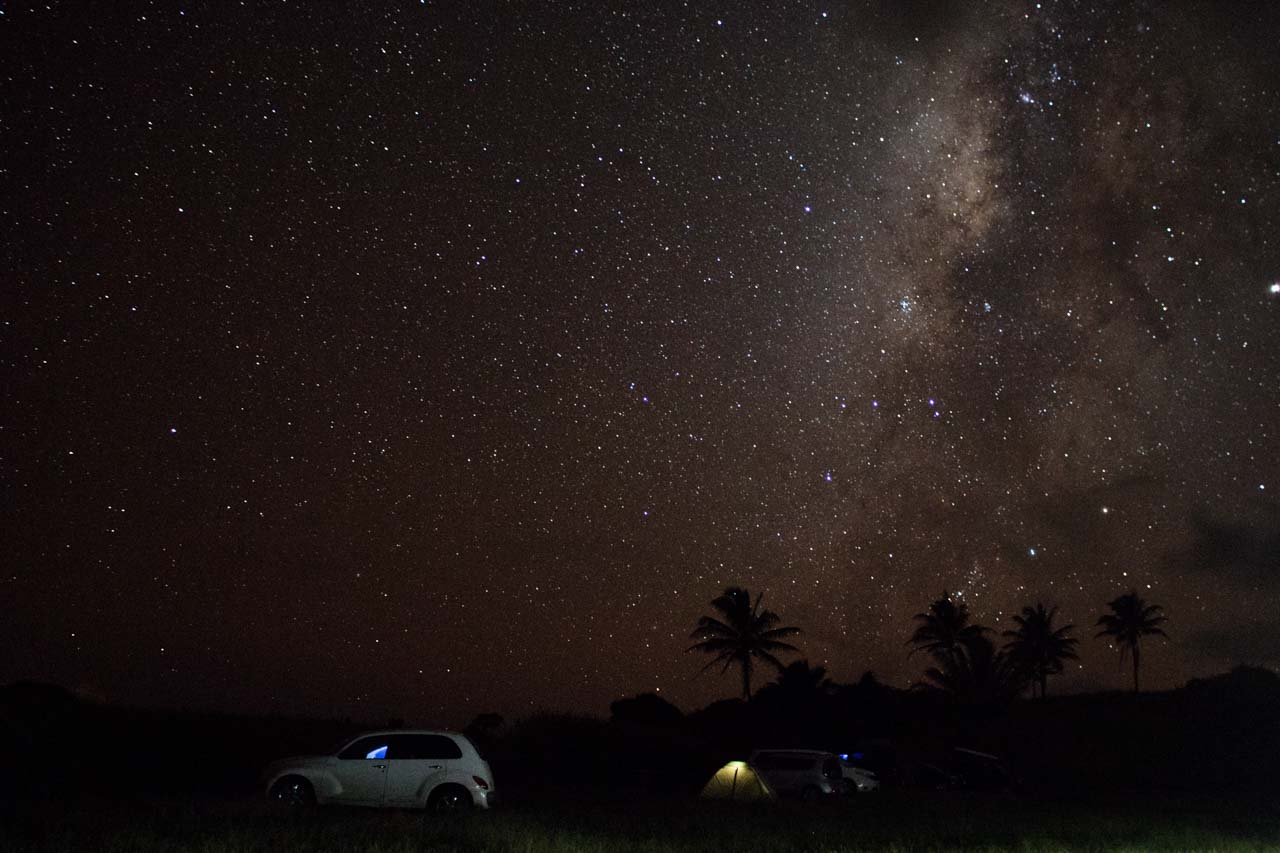
Visiting Haleakalā National Park in March
Even though winter is the “wet” season in Hawaii, that doesn’t mean visiting the Hawaiian national parks is a bad idea.
Rather the contrary, in fact, spending some time in Hawaii in March is an absolutely amazing idea. I can’t imagine many other places that are better to escape winter or early-spring storms on the mainland.
Temperatures remain high throughout the year in most areas, while more precipitation means even lusher tropical scenery.
Haleakalā National Park in Maui, for example, is a great place to visit in March. Thanks to its wide range of elevations between the coastal Kīpahulu District and the Summit District, there’s usually some enjoyable weather to be found somewhere in the park.
The Kīpahulu District has daytime temperatures that range between 70 and 80 degrees year-round, including in winter and spring. This lush area, home to palm trees, waterfalls, and natural swimming holes, does get its fair share of rainfall, though, so remember to bring appropriate clothing.
At the spectacular summit of Haleakalā, it can get significantly colder. The National Park Service says that “on average, the temperature drops about 3°F for every 1,000 foot rise in elevation, making the 10,023-foot summit of Haleakalā about 30°F cooler than the coast.”
Popular activities in Haleakalā National Park in March include swimming (heed any posted flash flood warnings!), camping, hiking, bird watching, photography, sunrise and sunset viewing, and stargazing.
More About Haleakalā National Park
- Park Website
- Travel Guide
- Topographic Map
- Best Haleakalā Hikes
- Top Things To Do in Haleakalā National Park
- Accommodation
12. Hawai‘i Volcanoes National Park, Hawaii
Location: Southwestern portion of the Big Island, Hawaii
Expected Crowds: Low to moderate
Weather: The average high temperature is 71°F (22°C), while the average low temperature is about 52°F (11°C). (Note that there are significant temperature differences between the Kīlauea summit and the coastal area at the end of the Chain of Craters Road. Additionally, the summit of massive Mauna Loa can have freezing temperatures and even snow in any month of the year.) At Kīlauea, the most popular part of the park, rainfall and fog are possible any day in March, as well as in most other months.
Average Sunrise Time: 6:28 am
Average Sunset Time: 6:30 pm
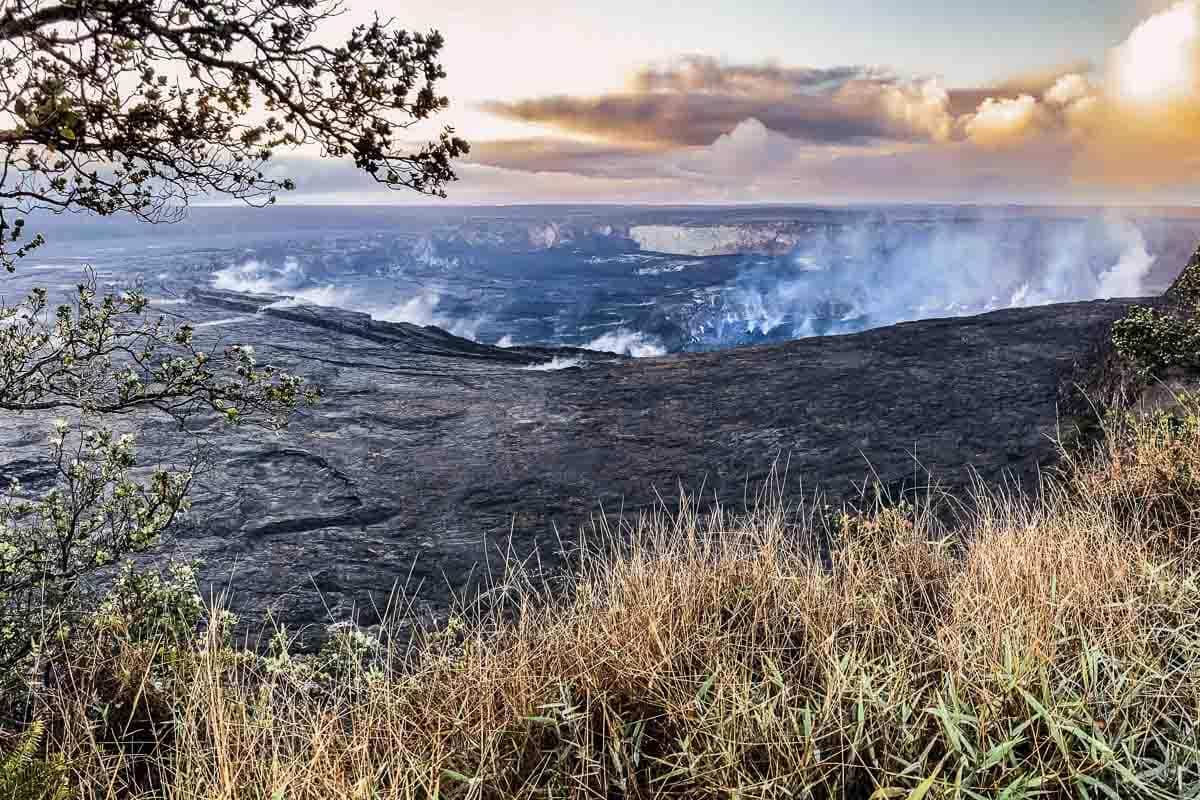
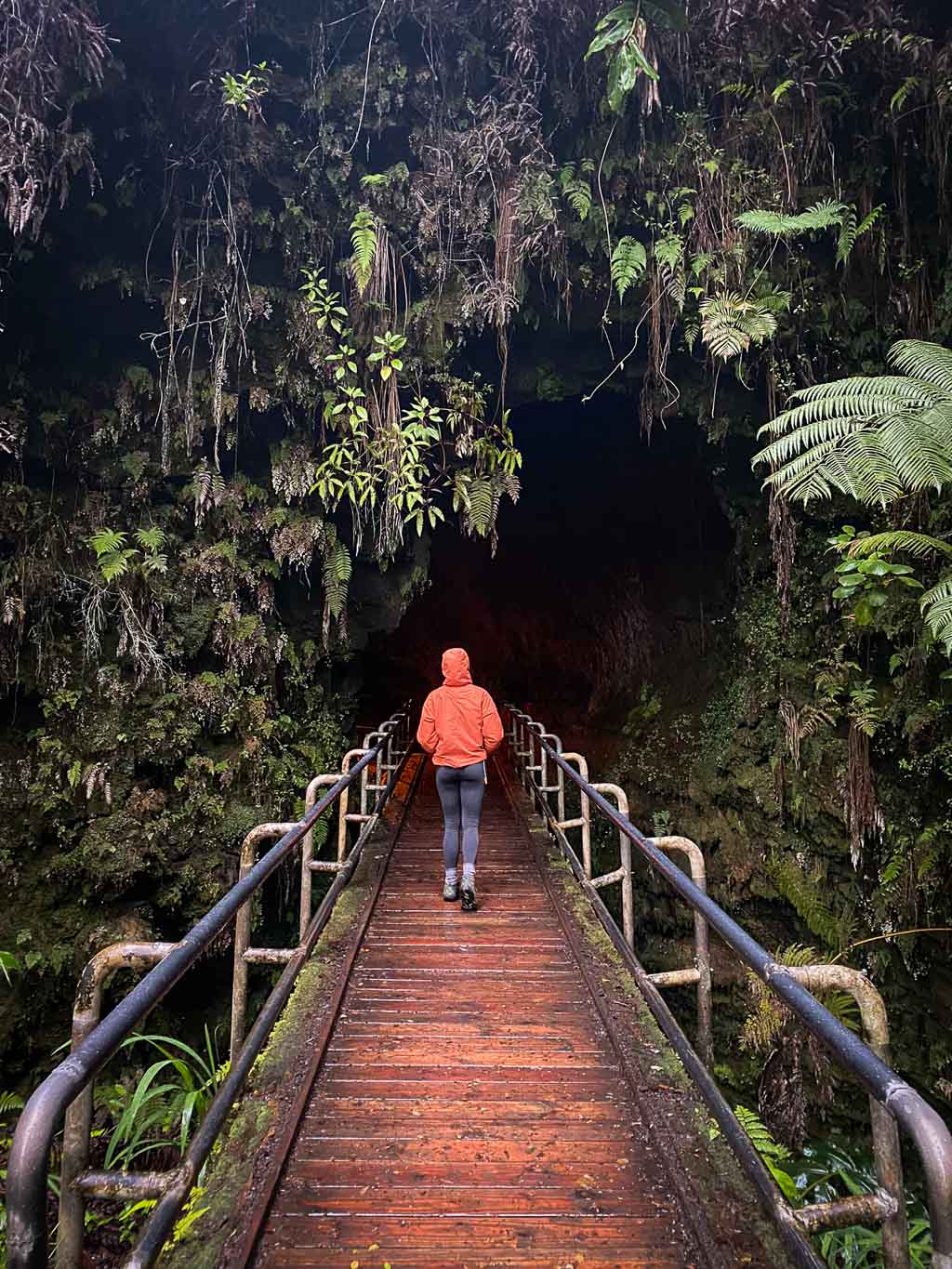
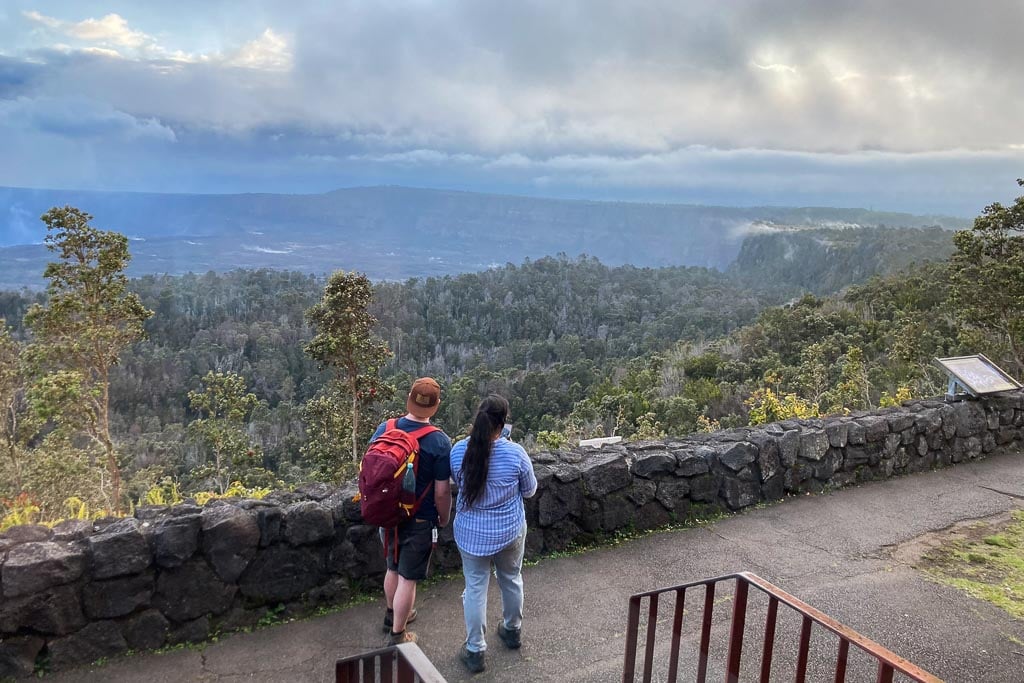
Visiting Hawai‘i Volcanoes National Park in March
The second national park in Hawaii is Hawai‘i Volcanoes National Park, located on the Big Island. Home to both Kīlauea and Mauna Loa, two of the most active and biggest volcanoes on the planet, this is yet another phenomenal national park to visit in March.
There are no distinctive seasons in Hawai‘i Volcanoes National Park. This basically means that temperatures in winter are as enjoyable as those in summer, although winters may be a tad wetter on average.
That said, the park is notorious for its rapidly changing weather—mist can roll in at any time, while evenings usually bring some rainfall. Chilly temperatures can also occur unexpectedly. Prepare and bring proper clothing for both sunny and rainy weather.
The park’s significant precipitation does, on the other hand, result in a gorgeous rain forest wonderland.
Numerous hiking trails run through verdant tropical forests, some descending into volcanic craters, others leading to jaw-dropping views. The park also has a few scenic drives, taking motorists past historic sites, overlooks, and other attractions.
Visitation numbers are fairly steady throughout the year, mainly because the park’s weather doesn’t change much. They usually peak around holiday periods, such as Christmas, New Year’s, and the Fourth of July, as well as whenever one (or both) of the park’s volcanoes are erupting.
Note, though, that serious eruptions may close (parts of) the park at any time, so make sure to check the park’s website before traveling there.
March is typically a relatively time in this unique national park, making it a great month for immersing yourself in this UNESCO World Heritage-listed volcanic wonderland.
More About Hawai‘i Volcanoes National Park
- Park Website
- Travel Guide
- Topographic Map
- Best Hawai‘i Volcanoes Hikes
- Top Things To Do in Hawai‘i Volcanoes National Park
- Best Views in Hawai’i Volcanoes National Park
- Accommodation
13. Joshua Tree National Park, California
Location: Southern California
Expected Crowds: Very high
Weather: The average high temperature is about 71°F (22°C), while the average low temperature is 46°F (8°C). Typical daytime temperatures are quite comfortable, while nights can be on the chillier side in March. March marks the end of the “wet” period in Joshua Tree. It’s not unusual for the first half of the month to have some rainfall, while the second half is typically significantly drier.
Average Sunrise Time: 6:30 am
Average Sunset Time: 6:25 pm
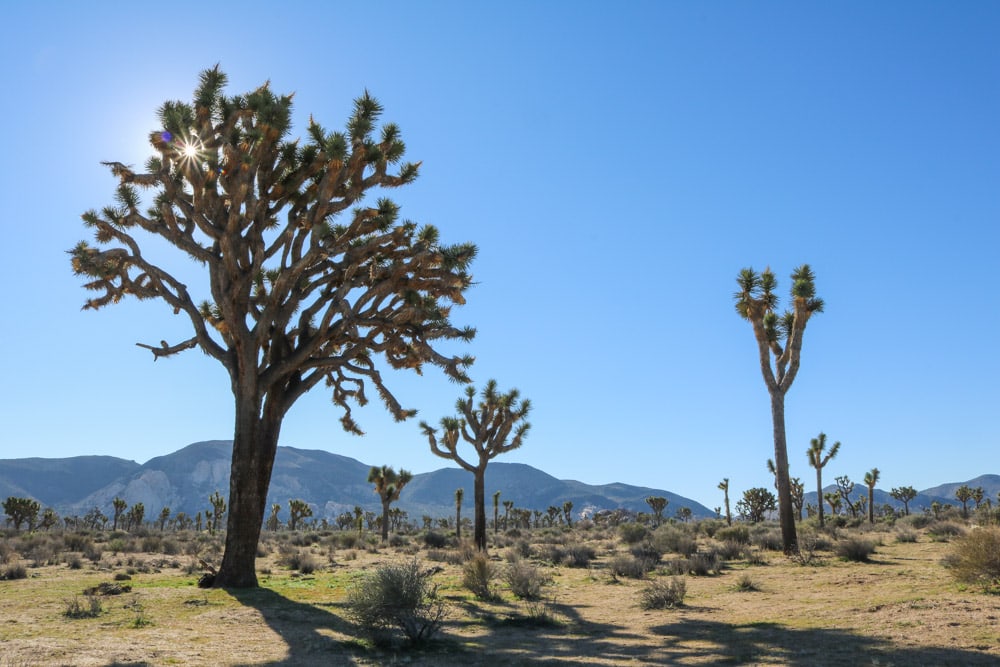
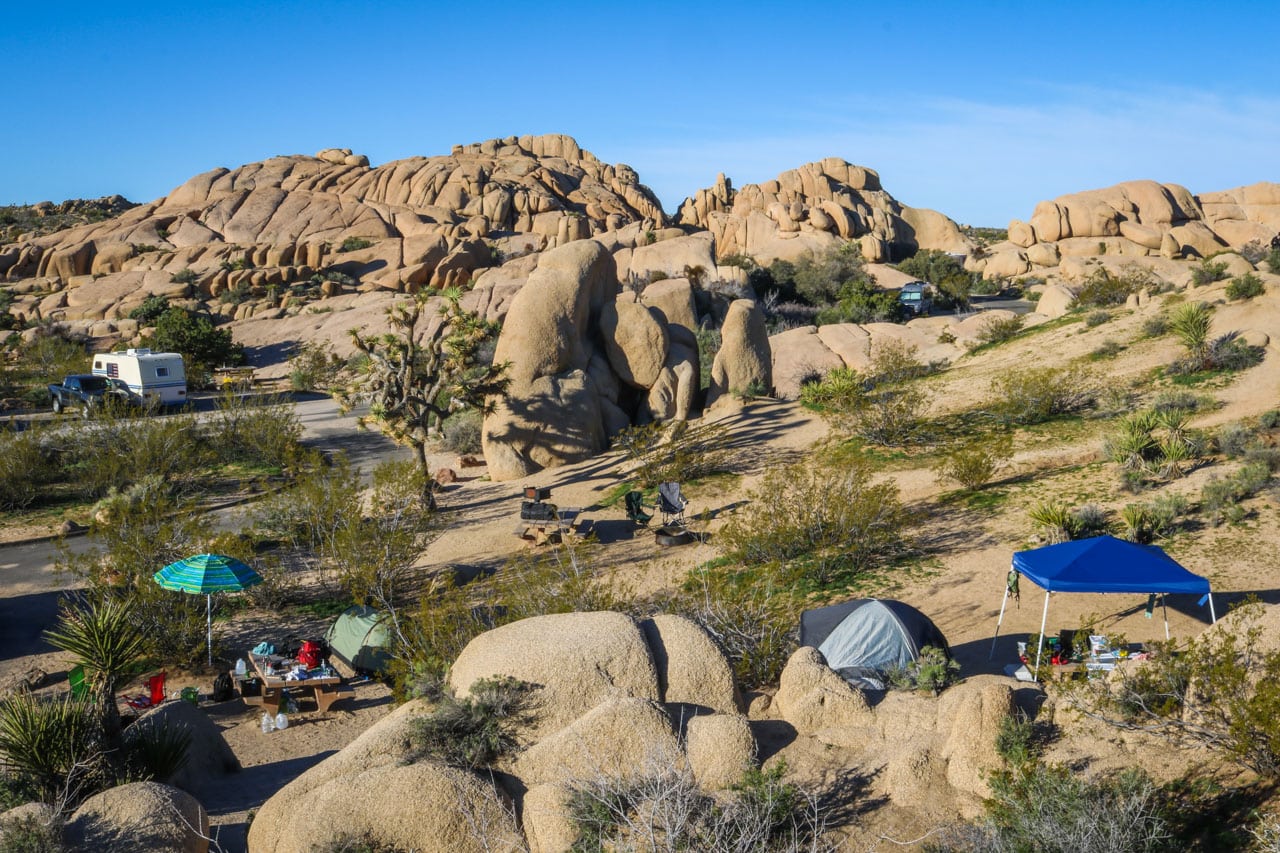
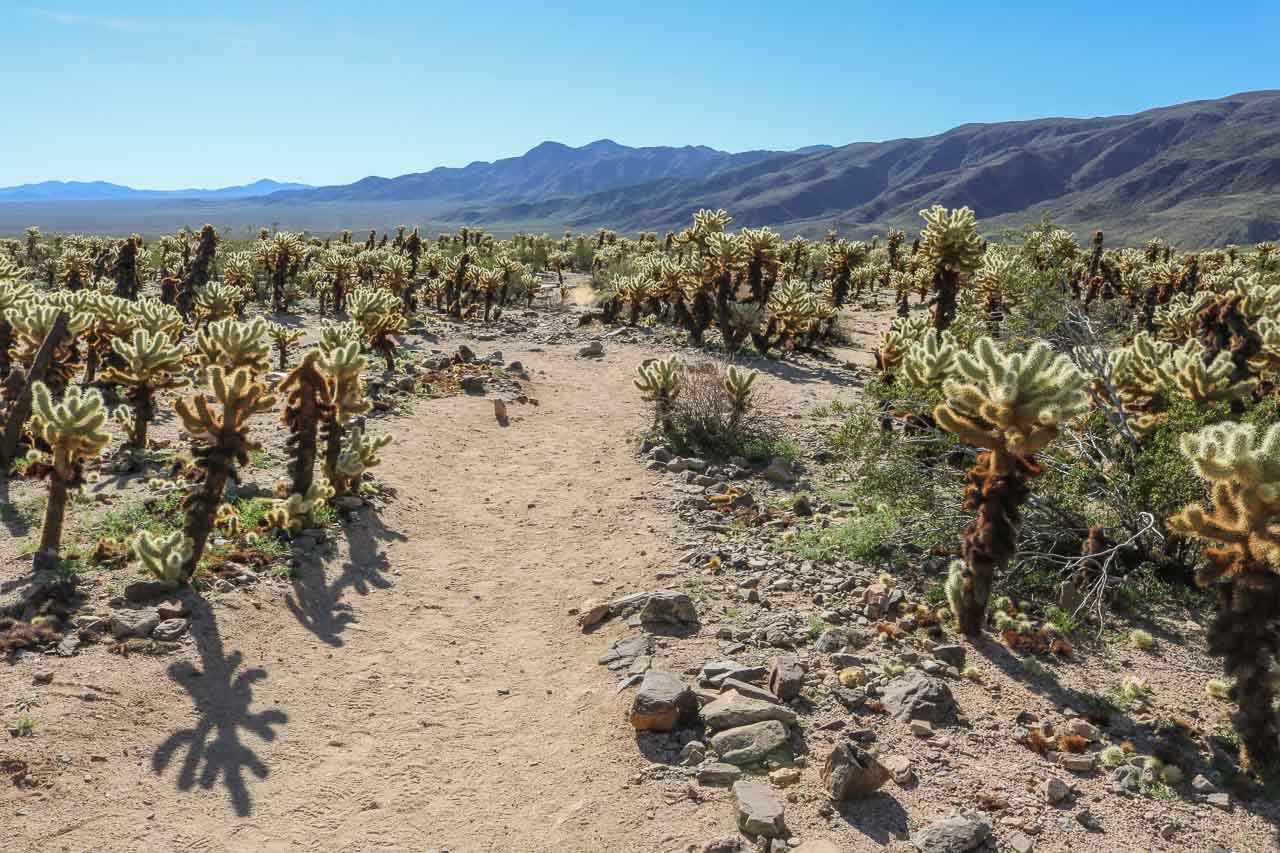
Visiting Joshua Tree National Park in March
“With over three million annual visitors, Joshua Tree National Park has become one of the top ten most-visited national parks in the country. Most visitors arrive from October through May, with the busiest times being weekends, holidays, and spring break season,” the park says on its website.
That Spring Break season runs from March through mid-April and is (by far) the busiest time of the year in Joshua Tree National Park. Traffic congestion, overflowing parking lots, crowded trails, and full campgrounds are to be expected through March.
However, if you plan your visit well—including reserving campsites many months in advance—you can have a phenomenal time exploring this iconic desert park in southern California.
Weatherwise, March can bring some rainfall to Joshua Tree, although the chance of precipitation decreases drastically throughout the month.
Daytime temperatures are more than comfortable, reaching into the low 70s, while sunshine is abundant. In fact, the climate in Joshua Tree National Park in March is nearly perfect, ideal for hiking, camping, bouldering, and stargazing.
More About Joshua Tree National Park
- Park Website
- Travel Guide
- Topographic Map
- Best Joshua Tree Hikes
- Top Things To Do in Joshua Tree National Park
- Best Views in Joshua Tree National Park
- Accommodation
14. Pinnacles National Park, California
Location: Central California
Expected Crowds: Moderate to high
Weather: The average high temperature is 66°F (19°C), while the average low temperature is 46°F (8°C). Nightly frost or snowfall is very rare in March. The monthly precipitation average is about 2.9 inches (73.7 mm) in total, with the chance of rainfall decreasing rapidly throughout the month. On sunny days, this is a gorgeous time to explore this small California national park.
Average Sunrise Time: 6:50 am
Average Sunset Time: 6:44 pm
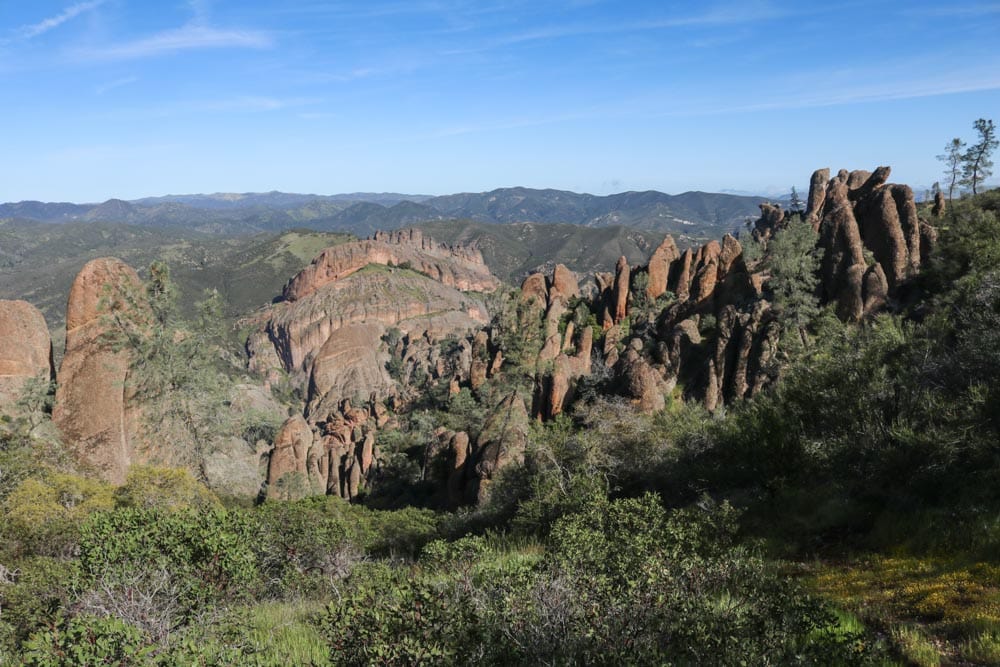
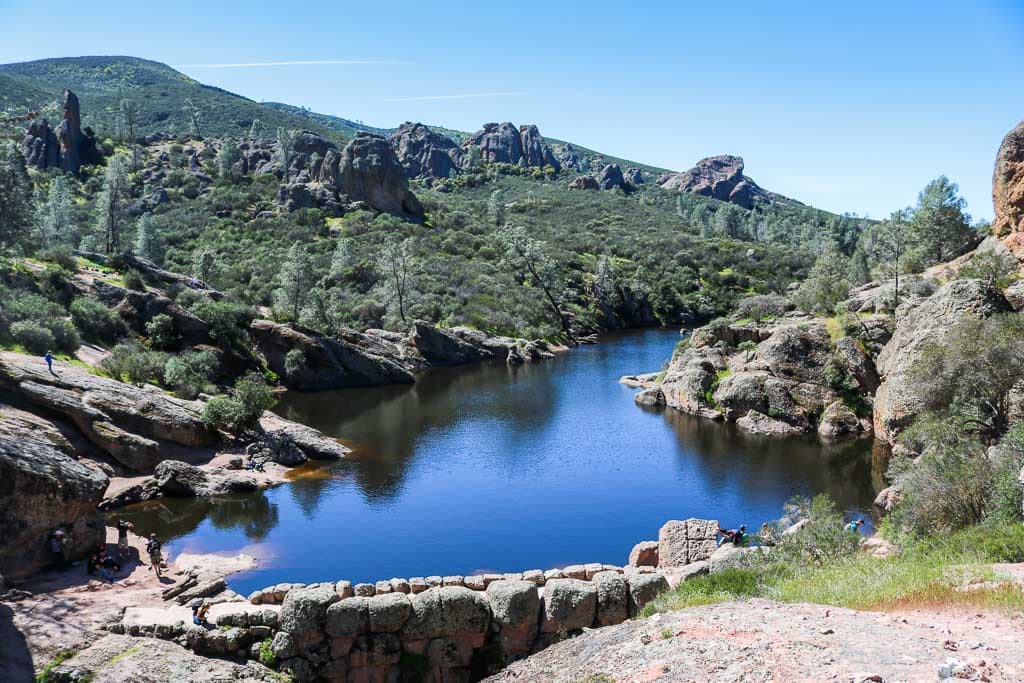
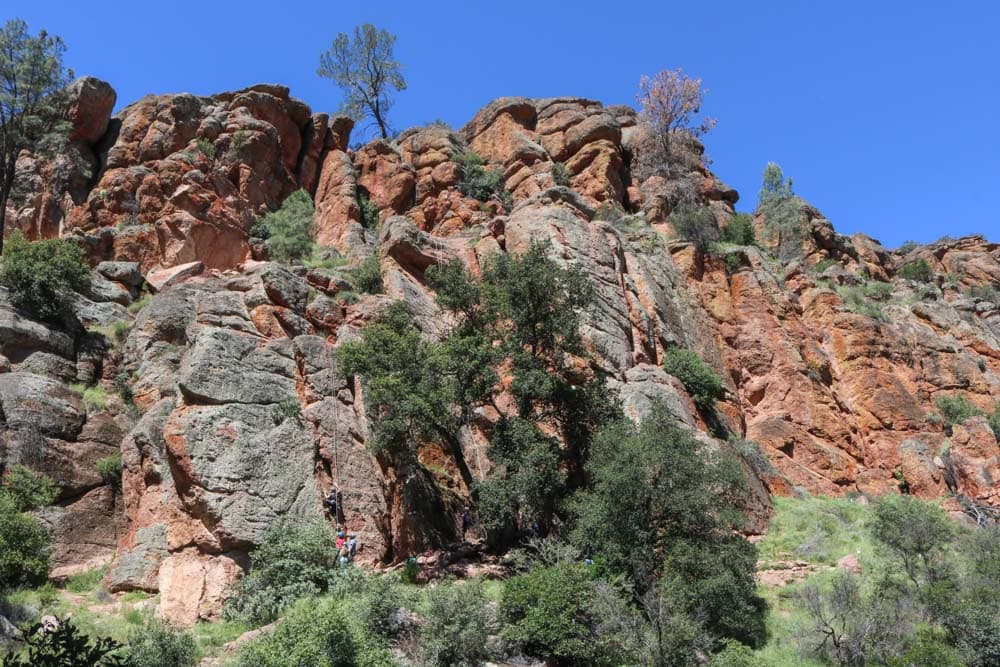
Visiting Pinnacles National Park in March
March is brings beautiful spring weather to Pinnacles National Park. Although the chance of precipitation is relatively high in the beginning of the month, it decreases significantly towards the end.
Temperatures range from cool to comfortable, but are generally ideal for enjoying outdoor activities in the park, such as hiking and rock climbing. (If it is rainy, make sure to check trail conditions beforehand, though.)
Additionally, Pinnacles is also renowned for its unique bird watching opportunities, which are as good in March as in any other month of the year. Watch for iconic species like peregrine falcons, greater roadrunners, California condors, wild turkeys, California quails, and golden eagles.
More About Pinnacles National Park
- Park Website
- Travel Guide
- Best Pinnacles Hikes
- Top Things To Do in Pinnacles National Park
- Accommodation
15. Saguaro National Park, Arizona
Location: Southern Arizona
Expected Crowds: Very high
Weather: The average high temperature is 76°F (24°C), while the average low temperature is 48°F (9°C). Sporadic rain showers can occur about once a week in March and other winter/early-spring months. Snow is still a possibility, too, especially in higher-elevation areas of the park. Still, about 70% of March days have completely or mostly clear skies—plenty of sunshine and warmth to enjoy, in other words.
Average Sunrise Time: 6:33 am
Average Sunset Time: 6:31 pm
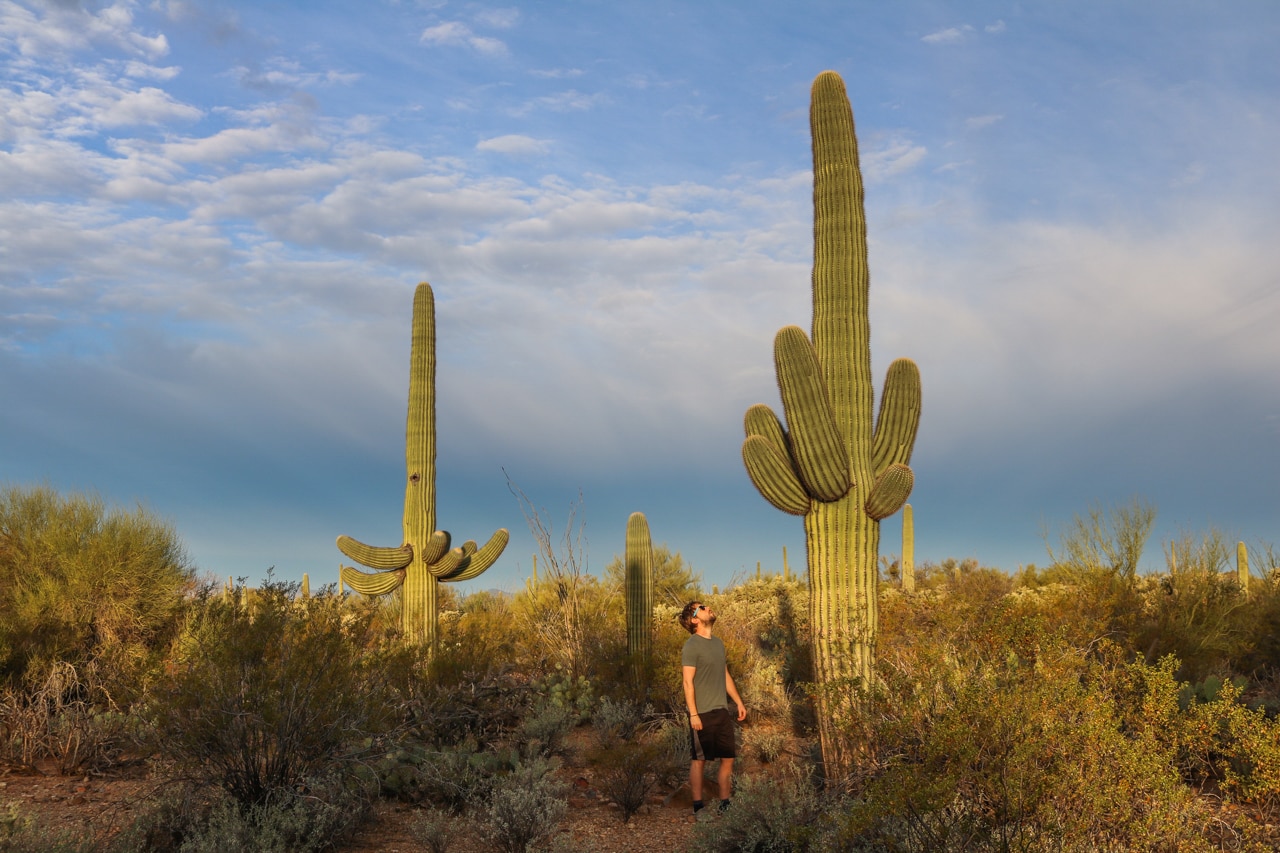
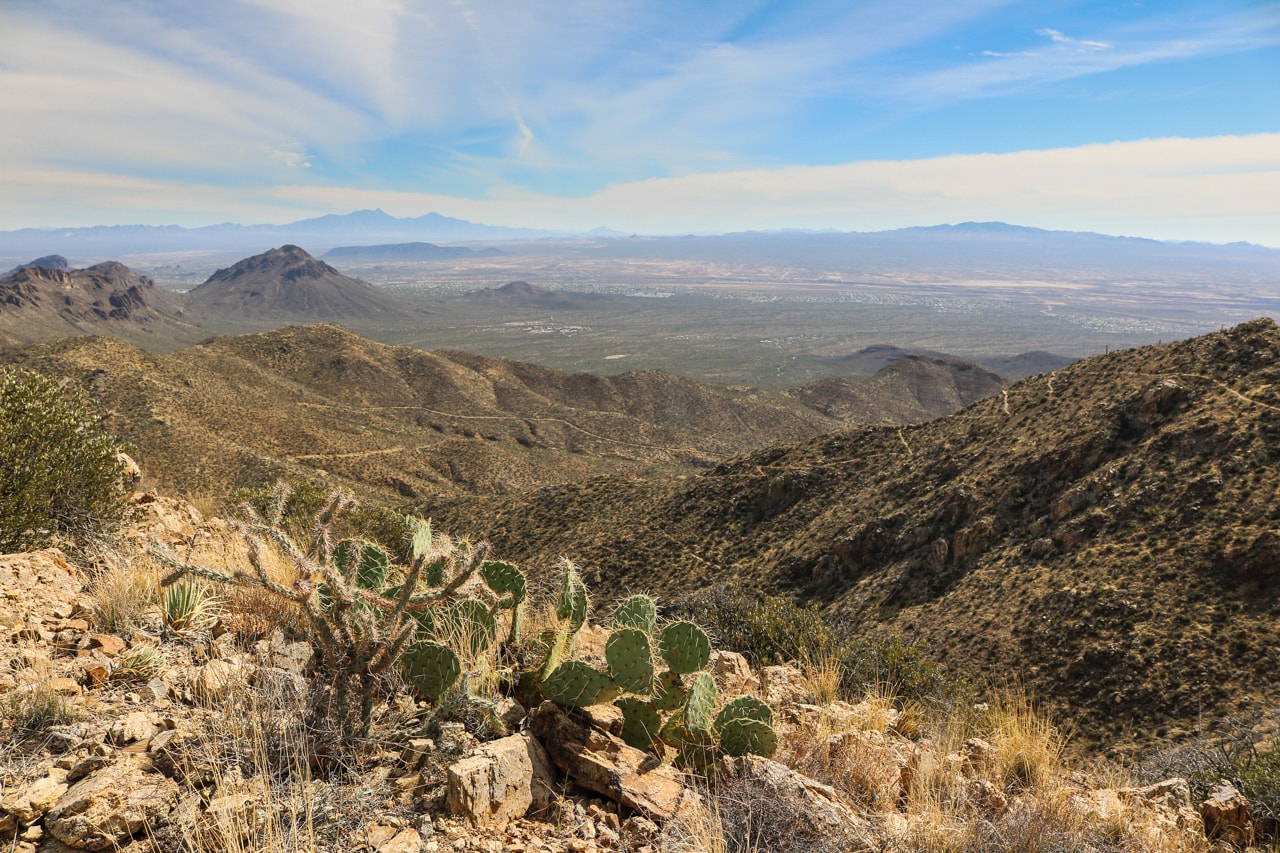
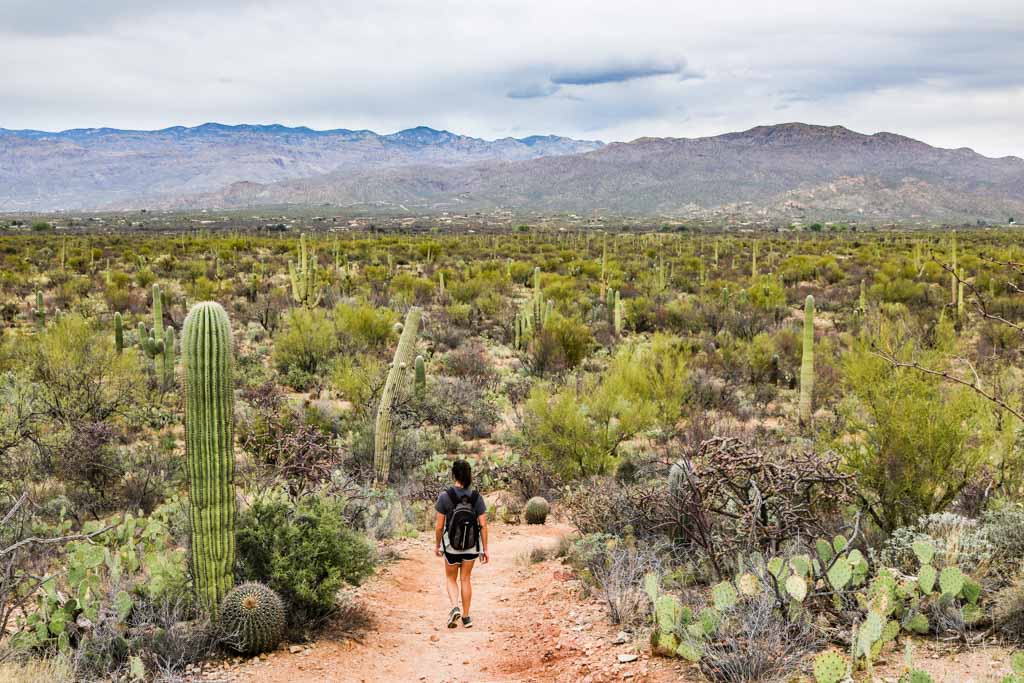
Visiting Saguaro National Park in March
March is when winter begins turning into summer in Saguaro National Park, southern Arizona. The chance of precipitation drops dramatically throughout the month, while temperatures increase and clear days become more common.
Daytime temperatures are well in the 70s in March and even nights don’t get all that cold anymore this time of year.
Thanks to those gloriously warm temperatures, combined with Spring Break crowds, Saguaro National Park is at its busiest in March. Visitation is extremely high this time of year, but don’t let that deter you from visiting, though!
There are plenty of opportunities to get away from the crowds in the park, which are still relatively small compared with other national parks anyway.
You can enjoy the amazing 70-plus-degree afternoons, which often come with abundant sunshine as well, on several excellent hiking trails in Saguaro National Park.
The King Canyon Trail to Wasson Peak, the Loma Verde Loop, and Tanque Ridge Trail are especially great for escaping the busy roadside areas. (Note that those higher elevations may have some snow, though, even in March, so check conditions before starting your hike.)
Additionally, its two separate districts—the Tucson Mountain District (West) and Rincon Mountain District (East)—both located on either side of Tucson, have their own scenic drive. Both roads are open to motorists and cyclists alike throughout March.
Due to the popularity of this region, including both the city of Tucson and Saguaro National Park, in March, I recommend booking your accommodation or campsite well in advance.
More About Saguaro National Park
- Park Website
- Travel Guide
- Topographic Map
- Best Saguaro Hikes
- Top Things To Do in Saguaro National Park
- Accommodation
16. Virgin Islands National Park, U.S. Virgin Islands
Location: Most of the island of St. John, U.S. Virgin Islands
Expected Crowds: High
Weather: The average high temperature is 84°F (29°C), while the average low temperature is 74°F (23°C). March is in the dry season in the Virgin Islands, with the chance of rainfall remaining exceptionally low throughout the month. A little precipitation is possible in March, commonly in the form of drizzle or brief rain shows, but major storms are very rare.
Average Sunrise Time: 6:26 am
Average Sunset Time: 6:28 pm
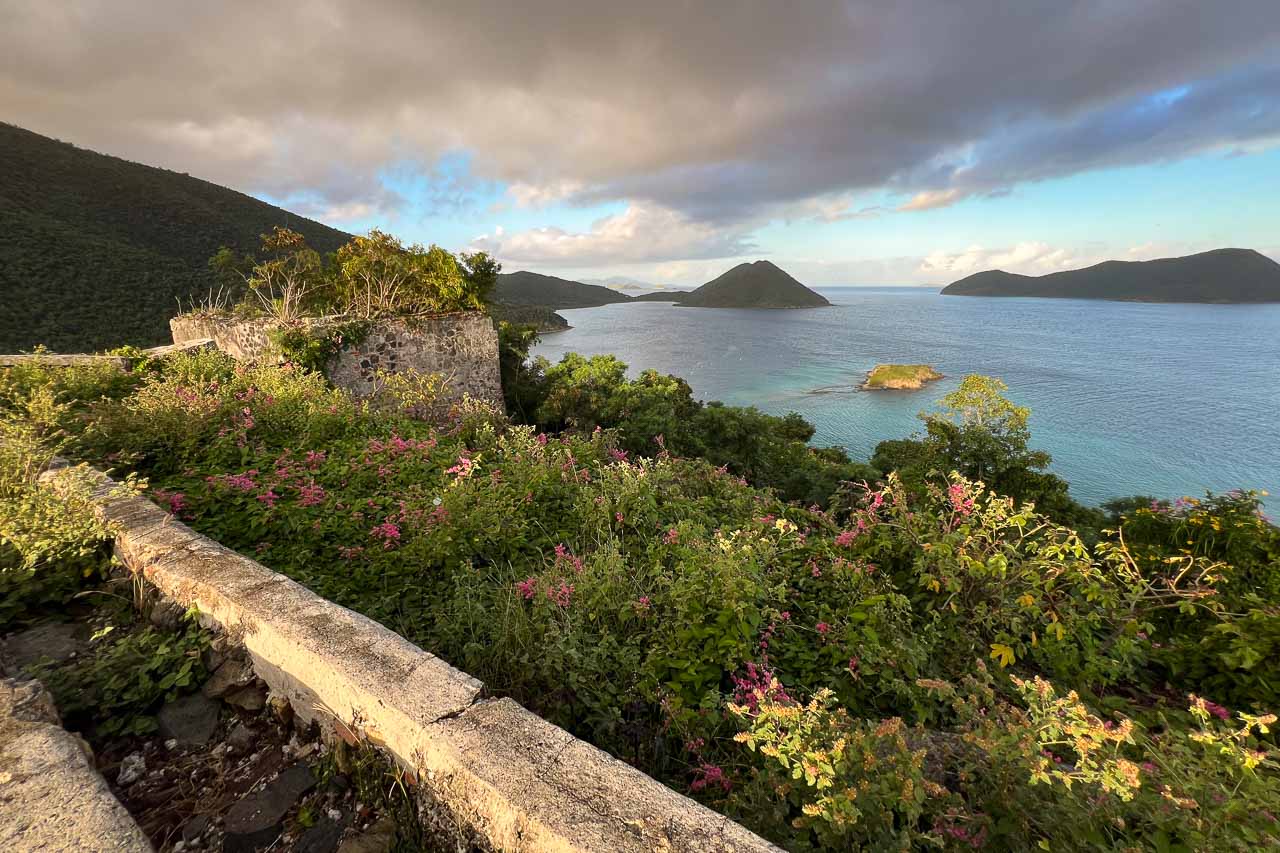
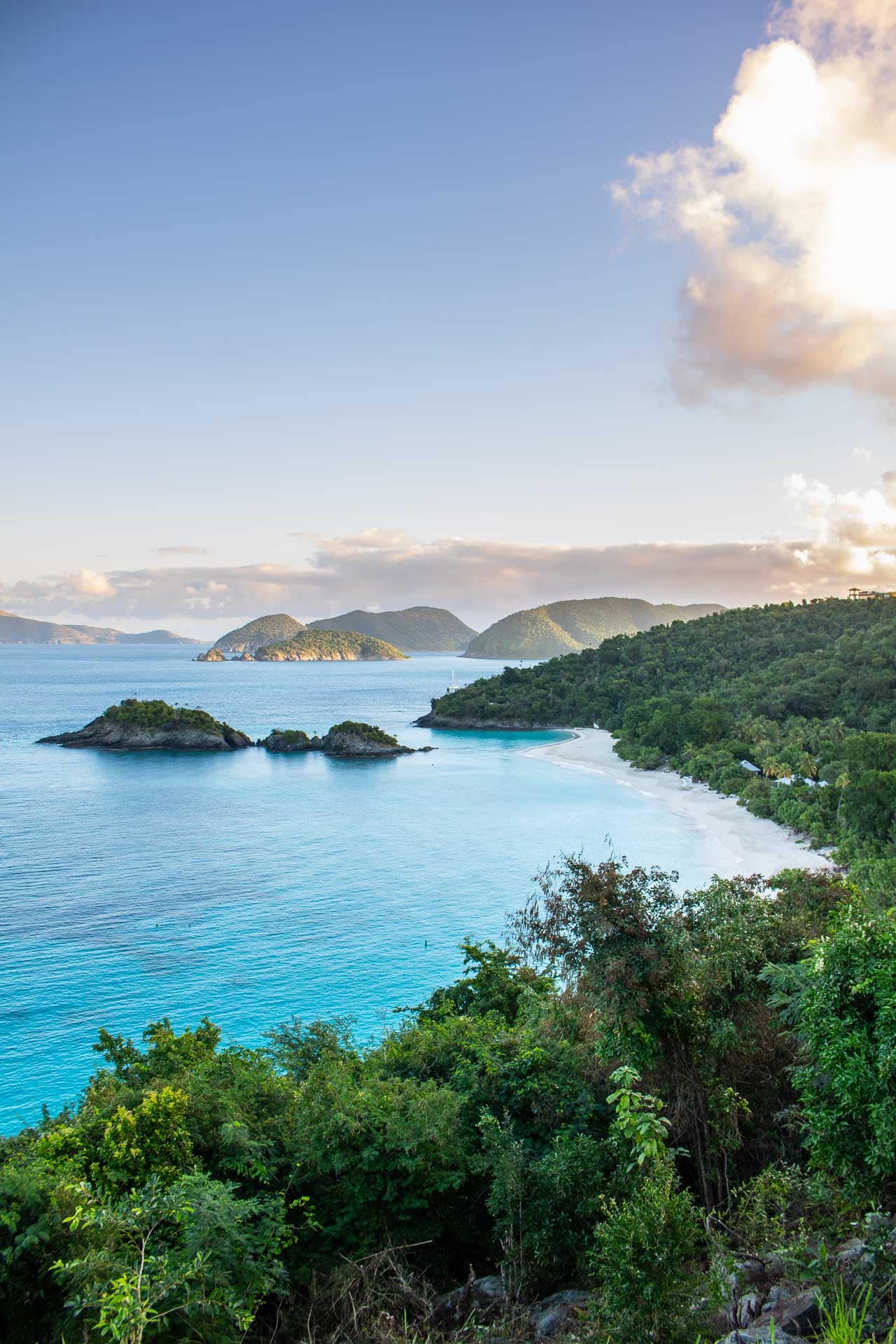
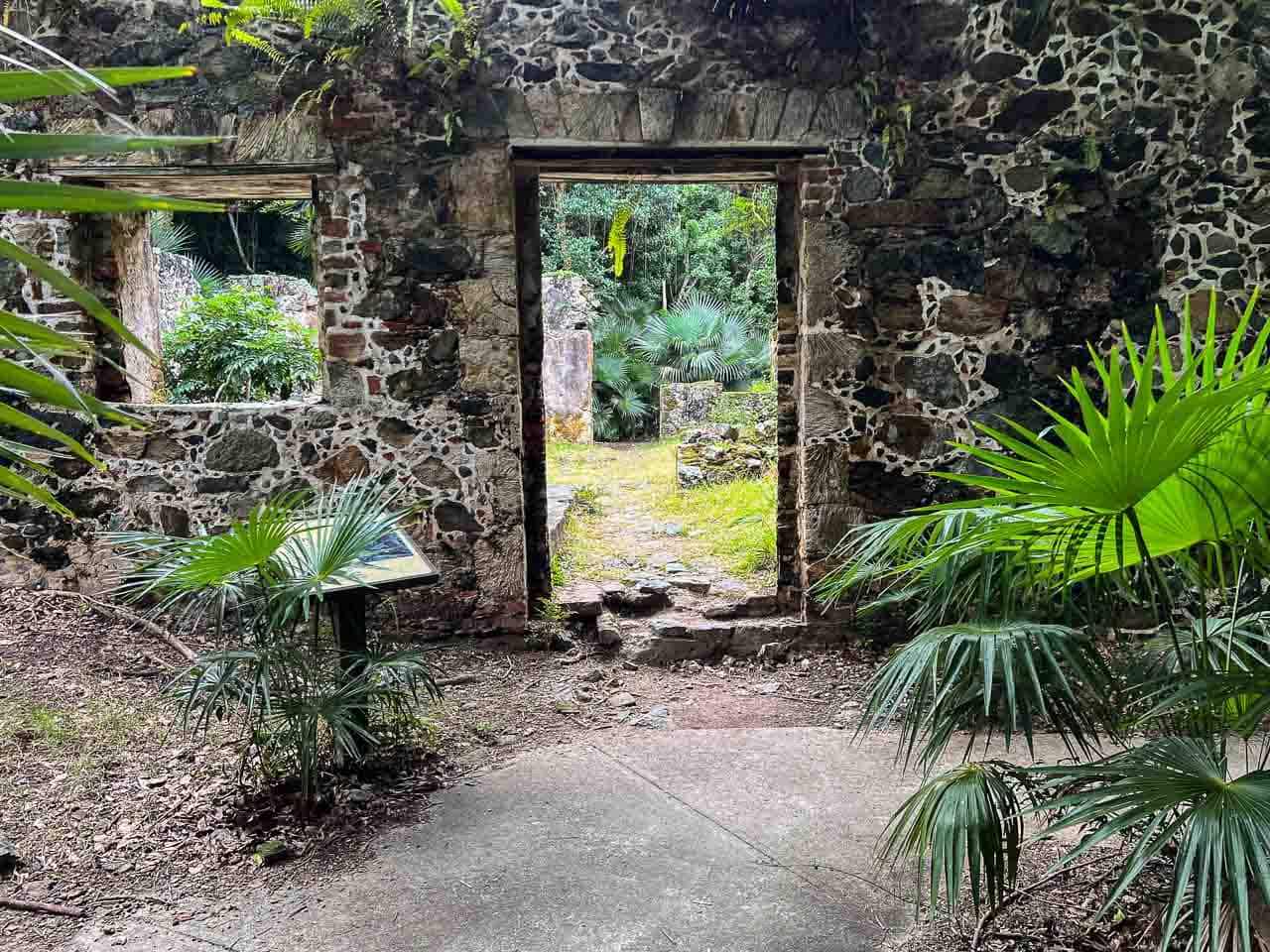
Visiting Virgin Islands National Park in March
For a tropical beach holiday in March, I can’t imagine any national parks that are better than Virgin Islands National Park. Very few places in America allow you to spend time in March snorkeling, sunbathing, swimming, and relaxing under palm trees quite like the U.S. Virgin Islands do.
This is the dry season in the Virgin Islands and much of the rest of the Caribbean. Chances of precipitation are extremely low throughout the entire month—March is the driest month of the year in the Virgin Islands—while temperatures are perpetually high and sunshine is plentiful.
This is arguably the warmest, sunniest, and driest national park you can visit in March.
Popular things to do in Virgin Islands National Park in March include glamping at Cinnamon Bay Beach, turtle viewing at Maho Bay Beach, exploring plantation ruins, hiking historic trails, and snorkeling at Trunk Bay Beach, which is considered one of the world’s most beautiful beaches.
More About Virgin Islands National Park
- Park Website
- Travel Guide
- Topographic Map
- Most Beautiful Beaches in Virgin Islands National Park
- Historic Plantation Ruins in Virgin Islands National Park
- Best Views in Virgin Islands National Park
- Best Hikes in Virgin Islands National Park
- Virgin Islands National Park Snorkeling Guide
- Accommodation
17. White Sands National Park, New Mexico
Location: Southern New Mexico
Expected Crowds: Very high
Weather: The average high temperature is 71°F (22°C), while the average low temperature is 32°F (0°C). Precipitation occurs mainly in the form of occasional wind storms. The total precipitation in White Sands National Park in March is only 0.27 inches (6.9 mm), though, making it the driest month of the year.
Average Sunrise Time: 6:50 am
Average Sunset Time: 6:46 pm
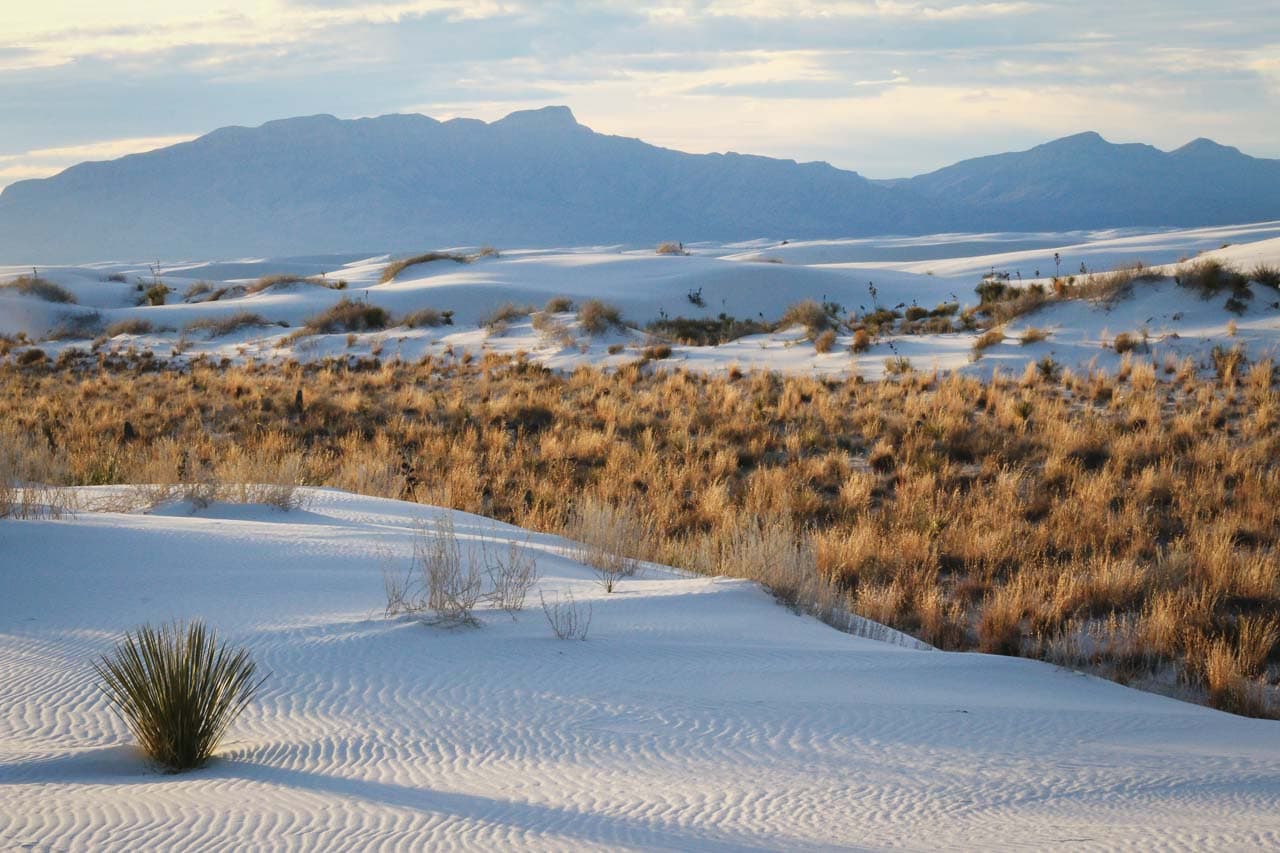
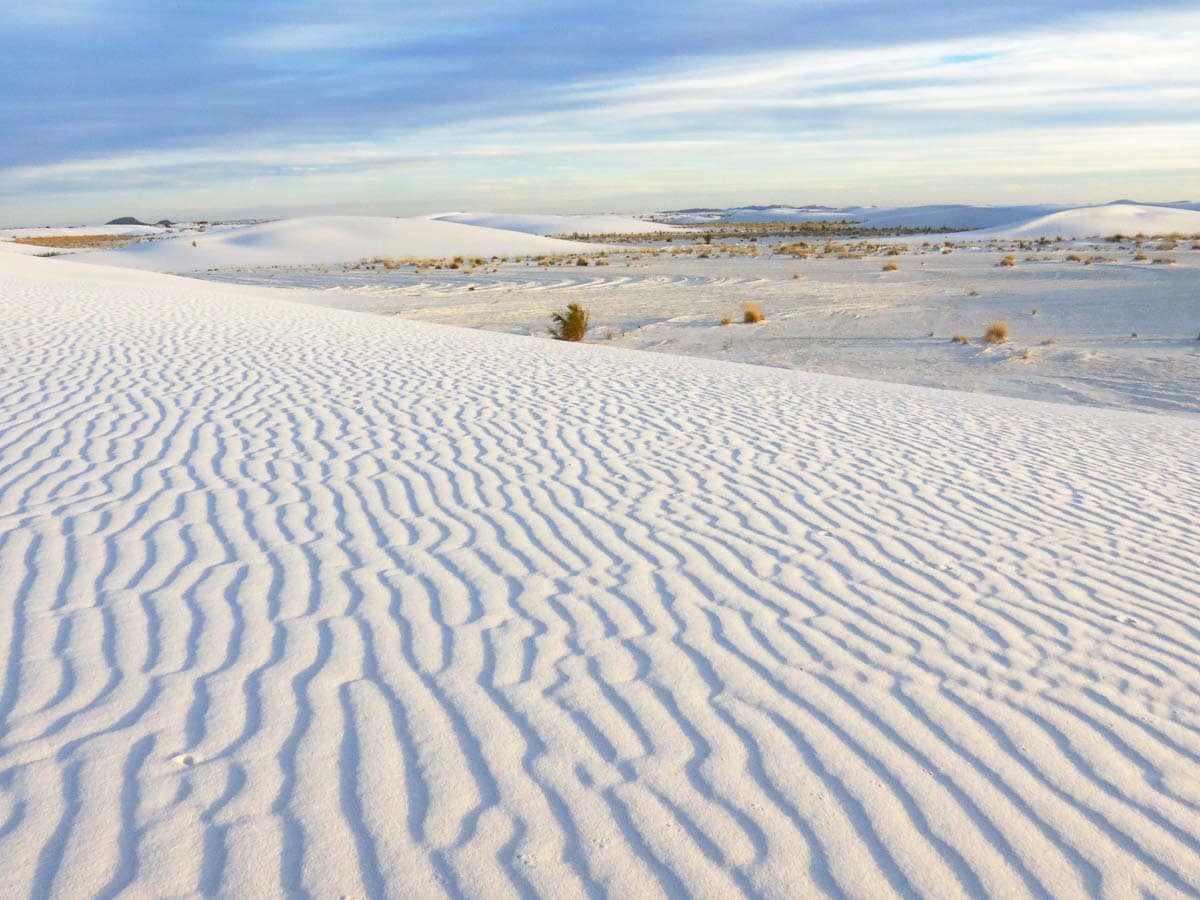
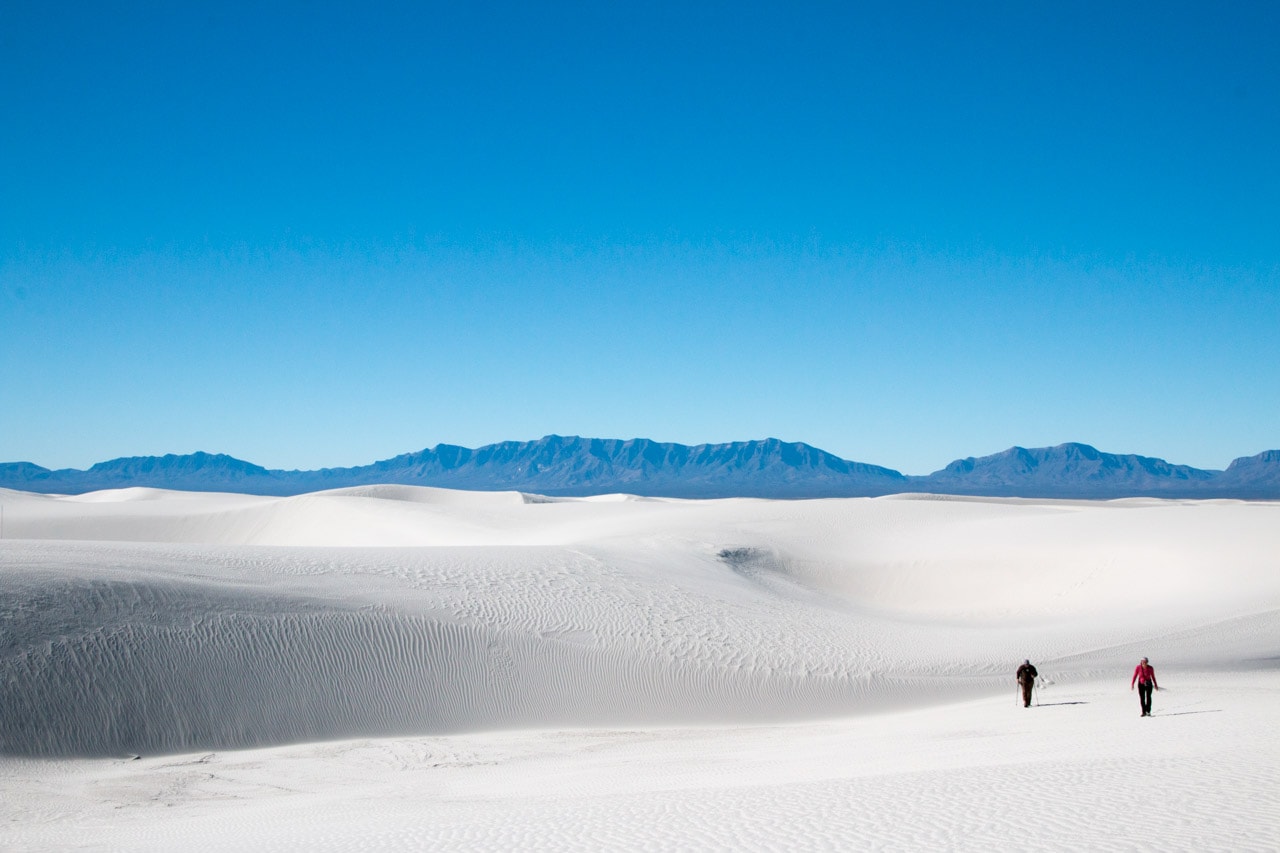
Visiting White Sands National Park in March
March through May is arguably the best time to visit White Sands National Park in New Mexico. Daytime temperatures are very comfortable at 70 degrees or more, while nights are chilly with mostly clear skies.
“Spring brings high winds up to 50 mph. Sunny days with strong windstorms are common,” the National Park Service says. Make sure to watch the weather forecast before you visit—these sandstorms can be quite intense, reduce visibility, and create occasionally hazardous breathing conditions.
On calmer days, however, White Sands National Park is amazing, easily one of the best national parks to visit in March. You can go for scenic drives, explore these stunning gypsum dunes on hiking trails, practice your photography skills, enjoy picnics, and bike the Dunes Drive.
And if that’s not all, you can even go sledding here. Sand sledding on the soft sand of the White Sands dunes is one of the park’s most popular things to do. Make sure to bring sunglasses and sunscreen!
More About White Sands National Park
18. Zion National Park, Utah
Location: Southwestern Utah
Expected Crowds: Moderate to high
Weather: The average high temperature is 66°F (19°C), while the average low temperature is 39°F (4°C). The weather is generally cool, but can be quite comfortable on sunny days. Days with freezing temperatures are possible, but uncommon. Average precipitation in March is 2 inches (20.8 mm), most of which is in the form of rainfall. Some snowfall can occur as well, mainly at the park’s higher elevations.
Average Sunrise Time: 7:17 am
Average Sunset Time: 7:11 pm
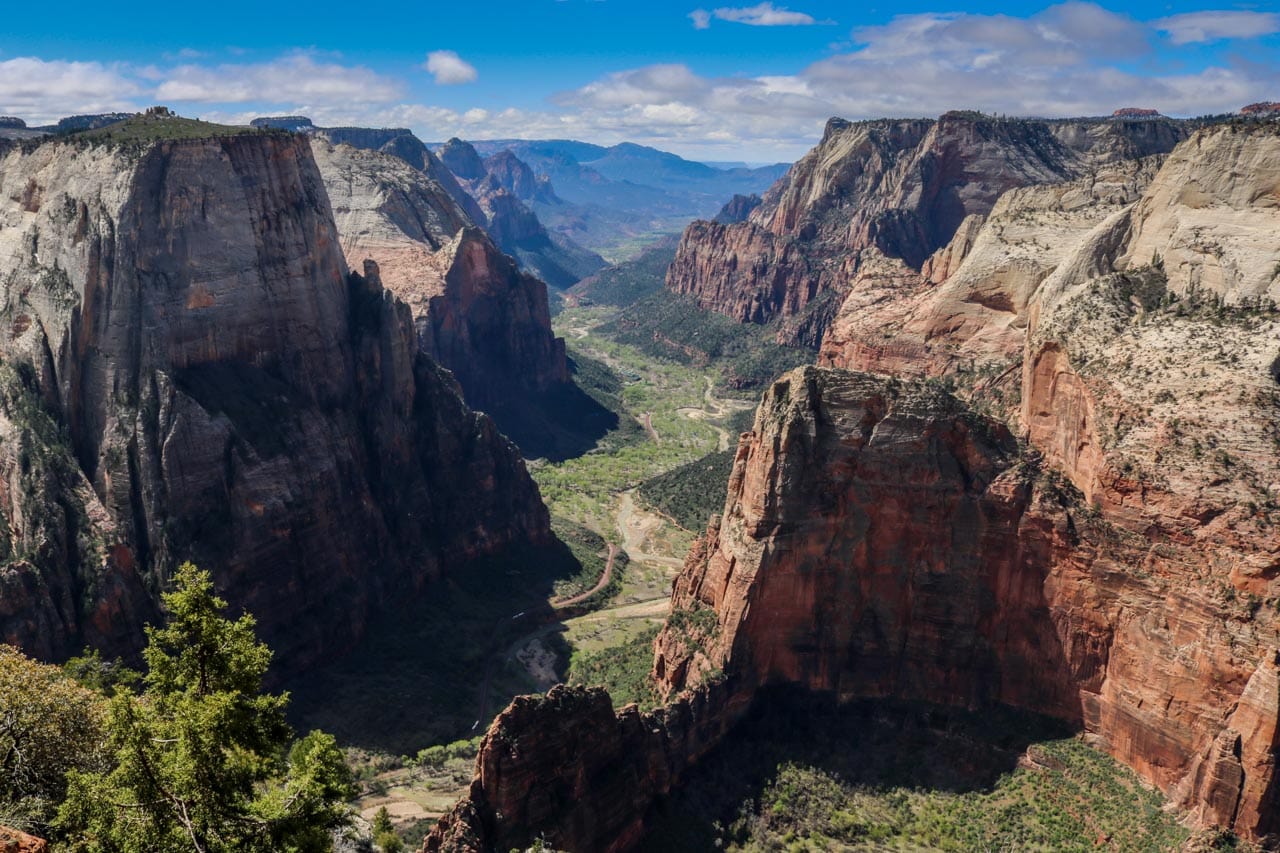
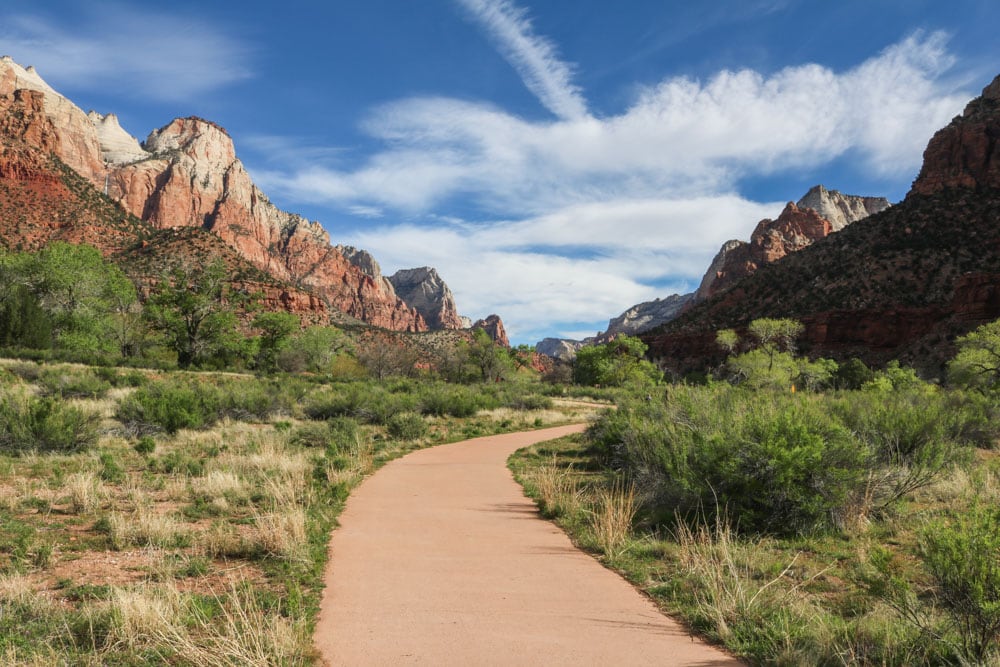
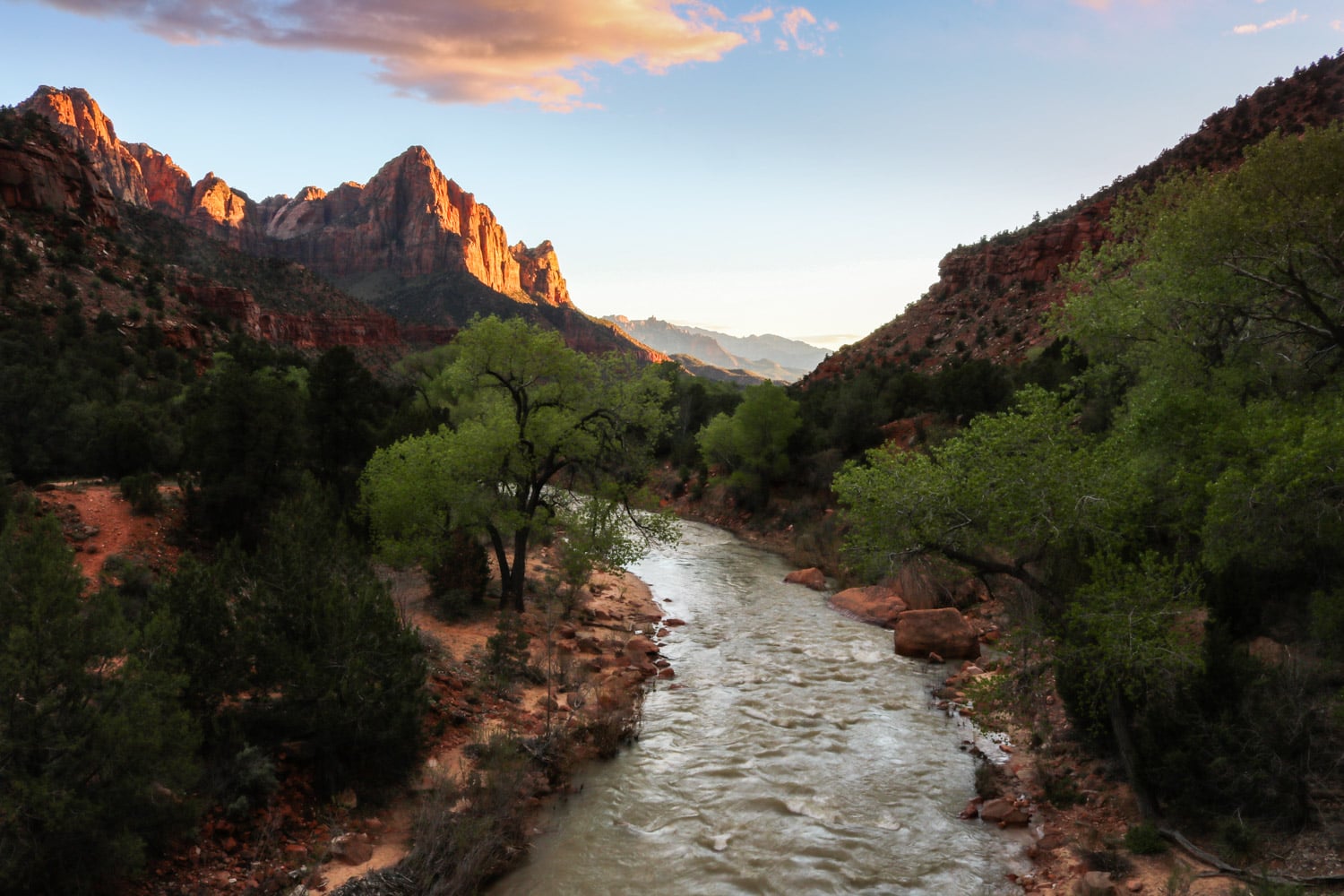
Visiting Zion National Park in March
After the quiet winter months of January and February, visitation begins picking up again in March in Zion National Park. It usually isn’t as crowded in March as it is during the summer months, though.
Spring brings longer days and warmer weather to Zion, the trees begin growing leaves, and some wildflowers start to bloom in lower elevations. While the daytime temperatures can be pretty nice, cold nights are still common.
“Depending on the amount of snow we received over the winter, higher elevation areas may still be inaccessible without winter gear. Snow begins to melt and raises the level of the river so the Narrows may be closed for an extended period of time,” the park says on its website.
Even if there’s still some lingering snow up on the cliffs and plateaus, there’s a lot to see and do in Zion National Park in March.
Explore Zion Canyon Scenic Drive on the shuttle bus, watch sunsets from epic viewpoints, stroll the Pa’rus Trail, visit the Human History Museum (check the website for opening times).
If you’d like to hike famous trails like Angels Landing and Observation Point, I recommend asking a park ranger about current trail conditions.
More About Zion National Park
- Park Website
- Travel Guide
- Topographic Map
- Best Zion Hikes
- Best Views in Zion National Park
- Accommodation
More Amazing National Parks to Visit in March
- Hot Springs National Park, Arkansas
- Mammoth Cave National Park, Kentucky
- Petrified Forest National Park, Arizona
When to Visit National Parks
For a nice visual overview of when to visit the national parks, I recommend checking out my national parks calendar in this blog post. It highlights the best months to visit each of the 63 U.S. national parks, which should help you plan your itinerary.
For an overview of the best national parks for a specific month, check out these blog posts (this is a series that is still in progress; I’ll add more months as I publish the posts):
- January: Best National Parks to Visit in January
- February: Best National Parks to Visit in February
- December: Best National Parks to Visit in December
Additionally, the following blog posts may also be helpful:
- Winter (cold): Best National Parks for Winter Wonderlands
- Winter (warm): Best National Parks for Warm Winter Getaways
- Spring: Best National Parks to Visit in Spring
- Summer: Best National Parks for Summer Island Vacations
- Fall: Best National Parks for Fall Foliage
